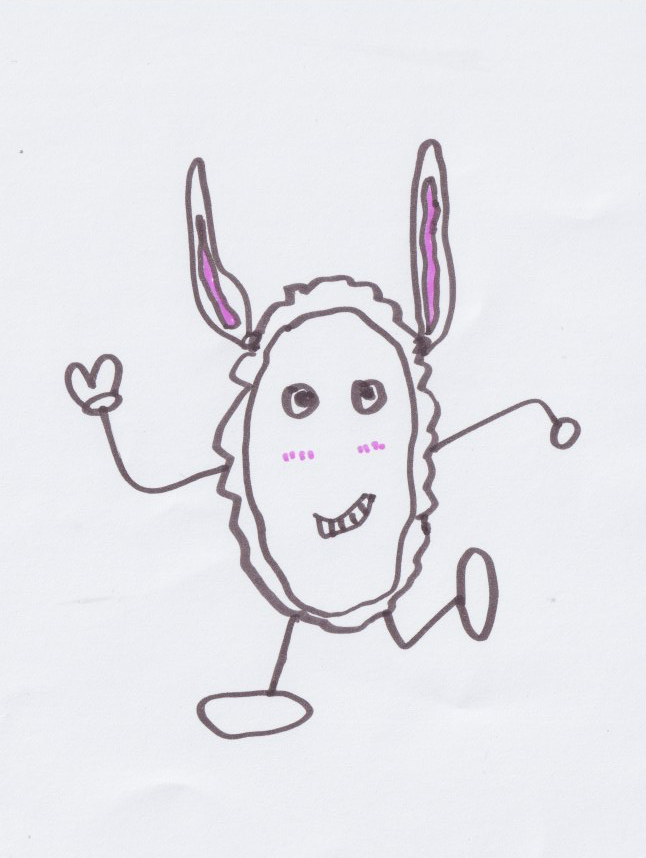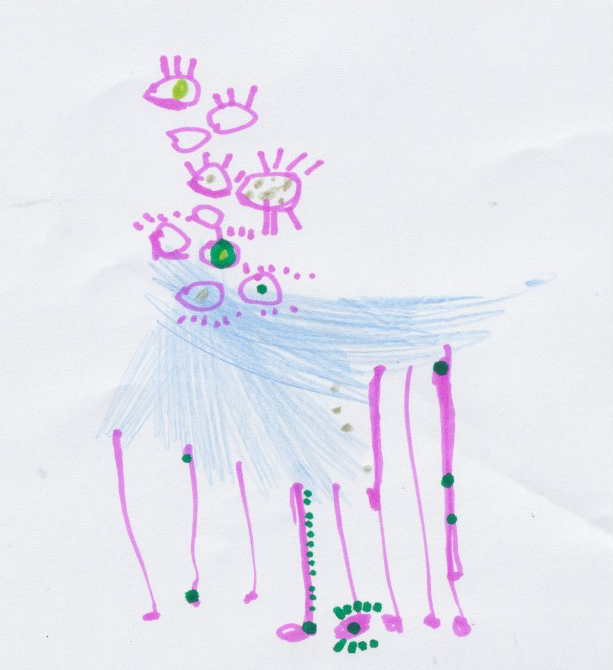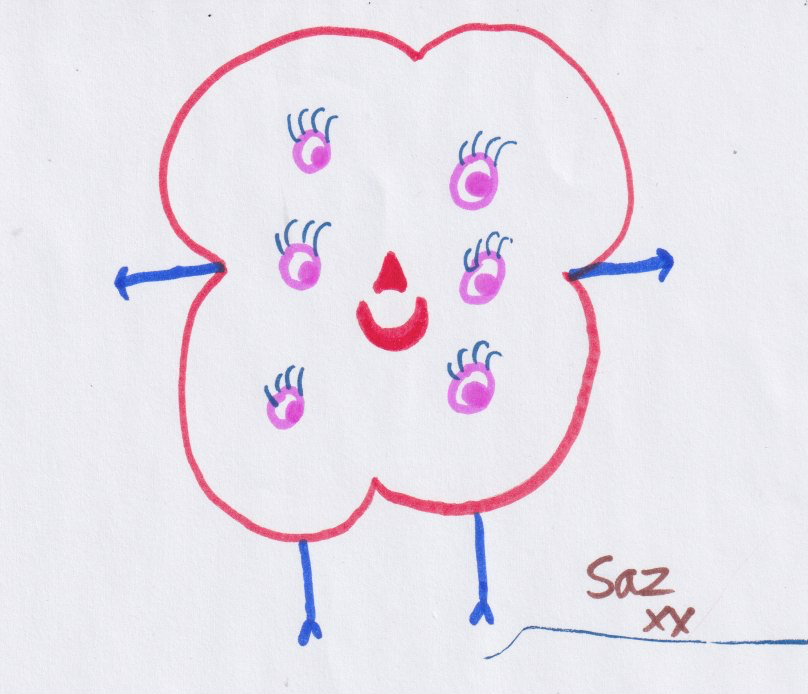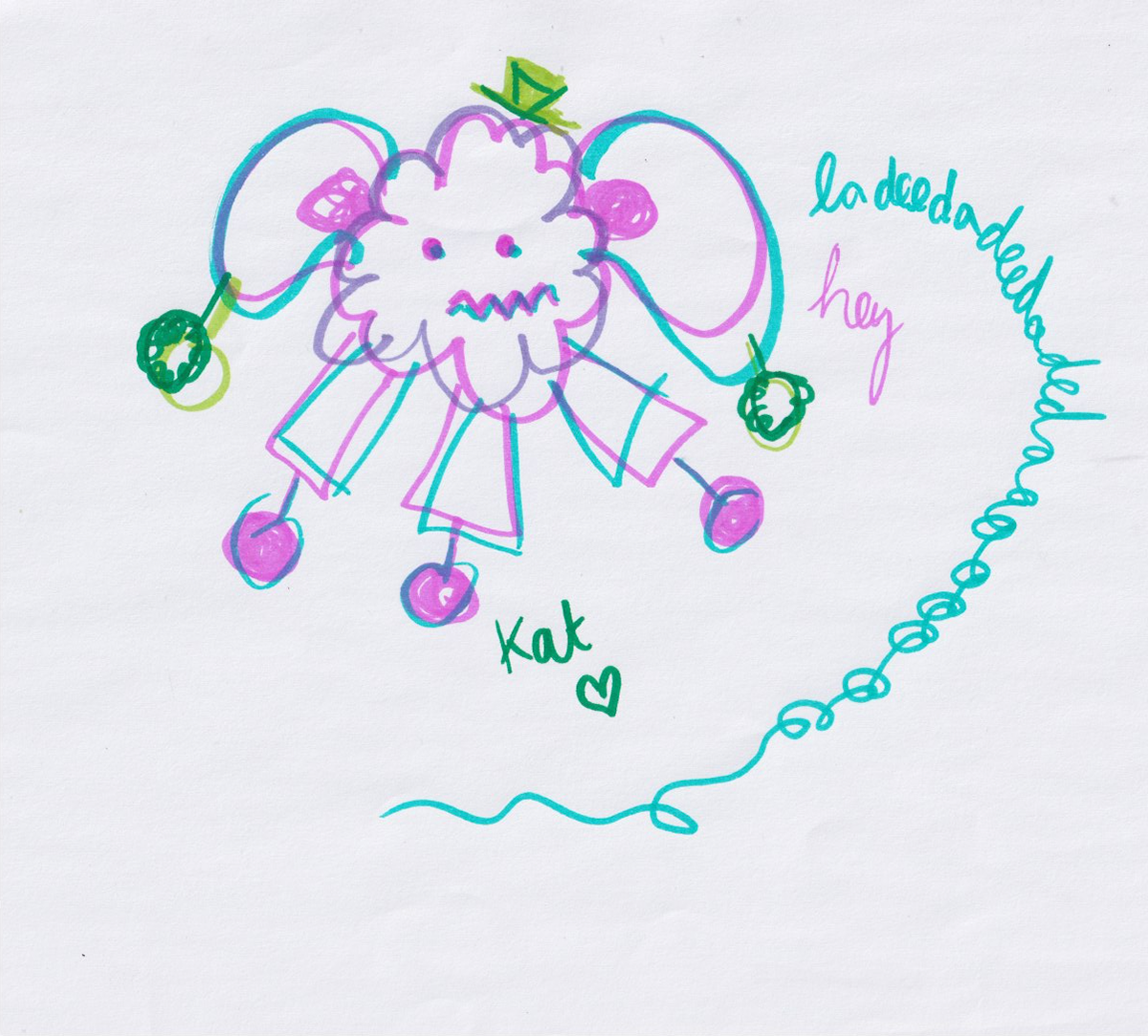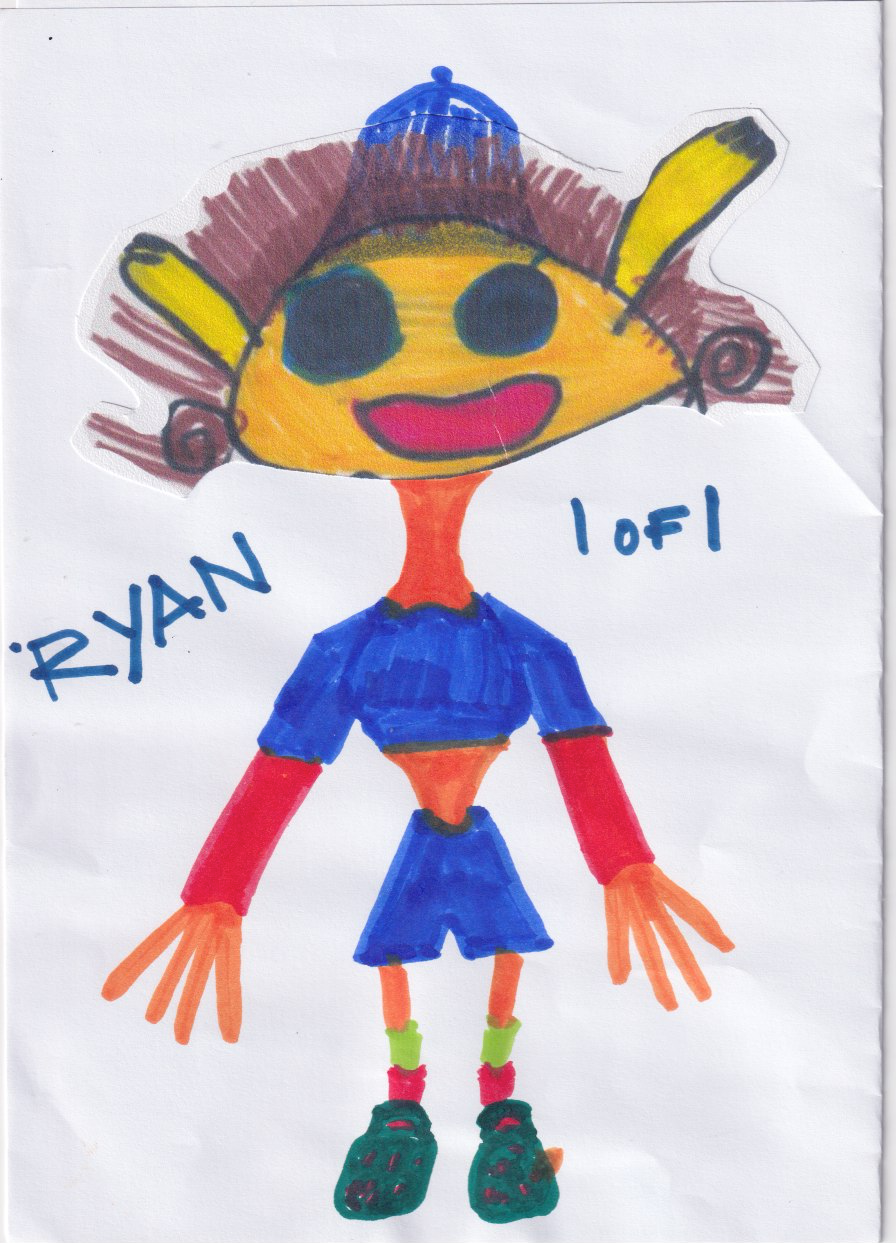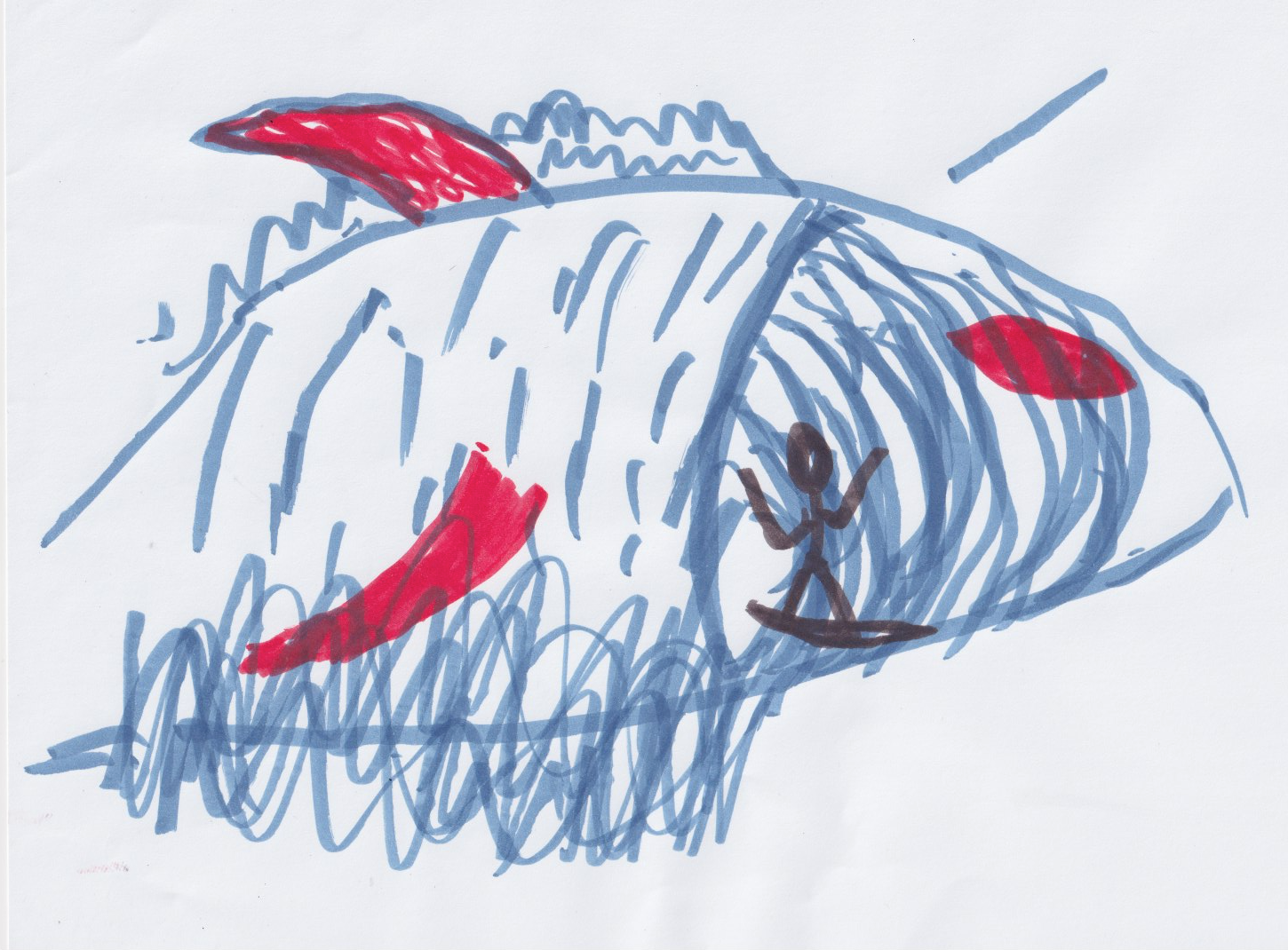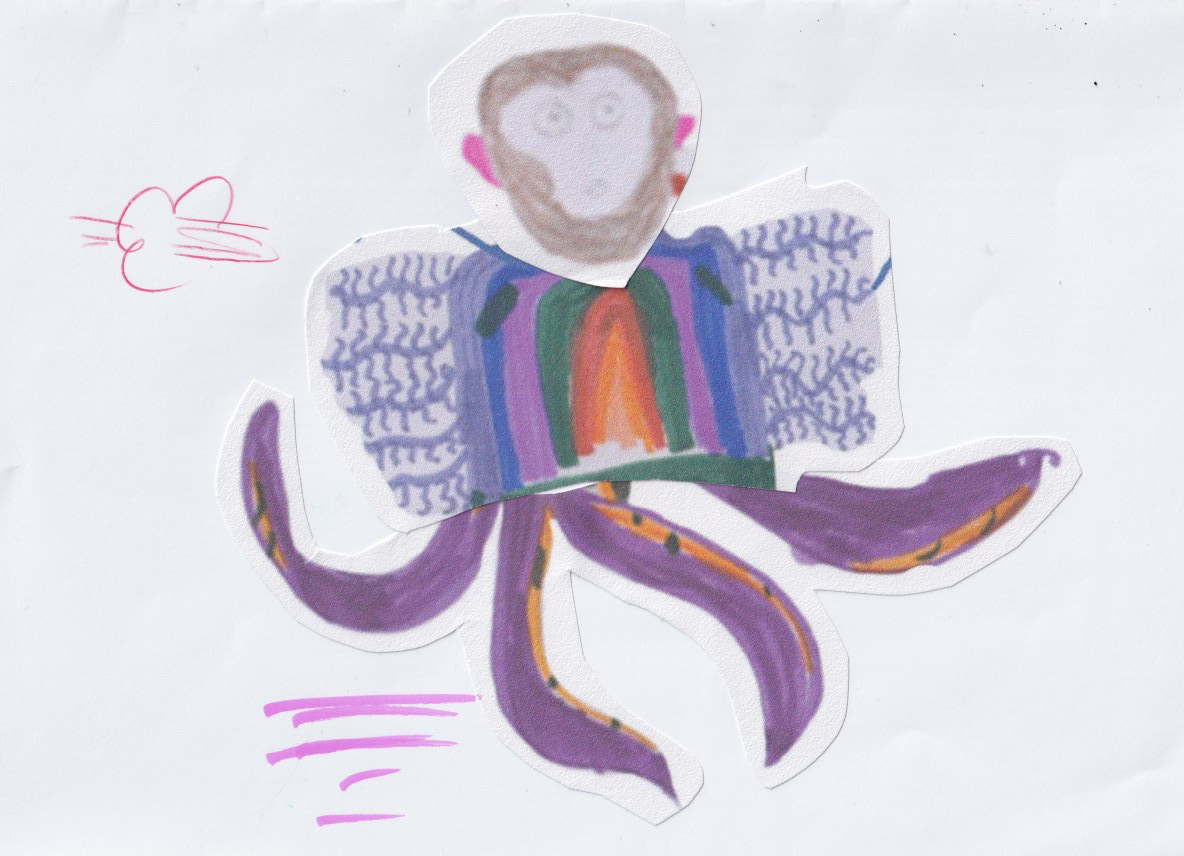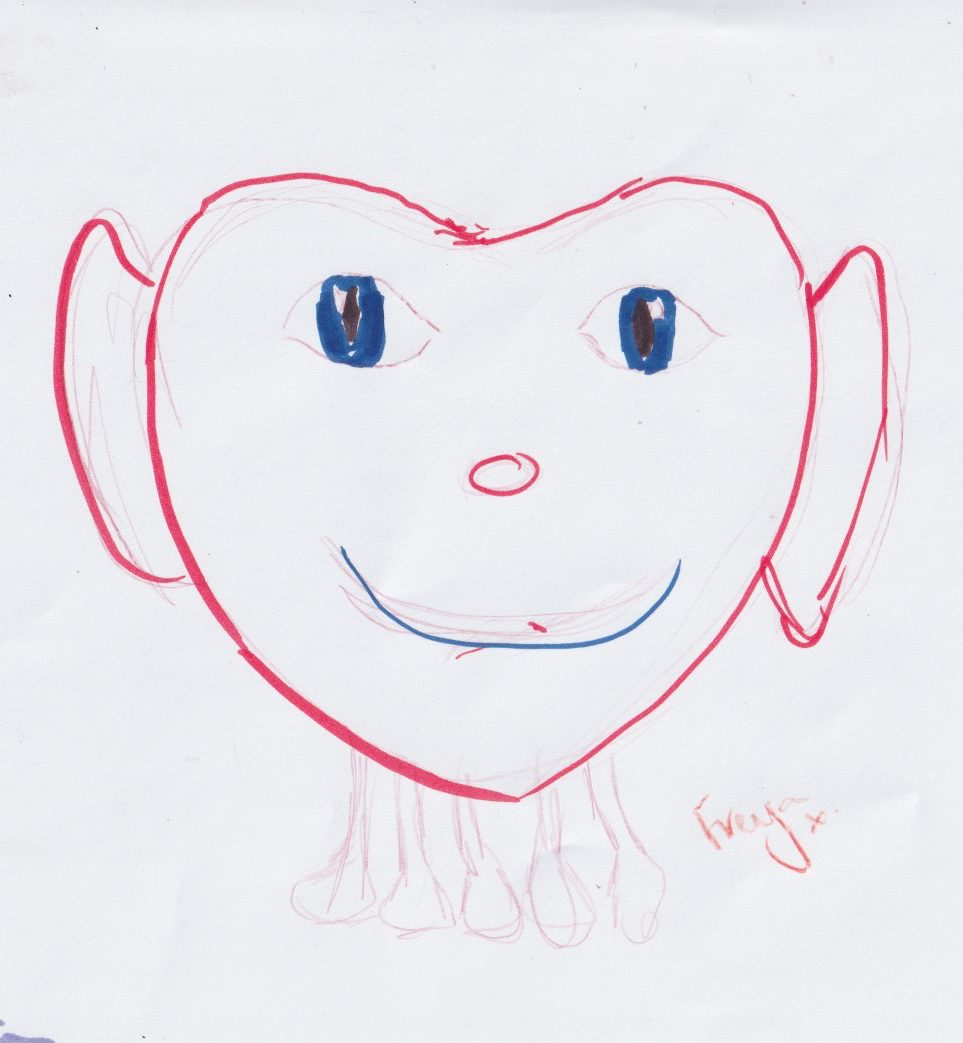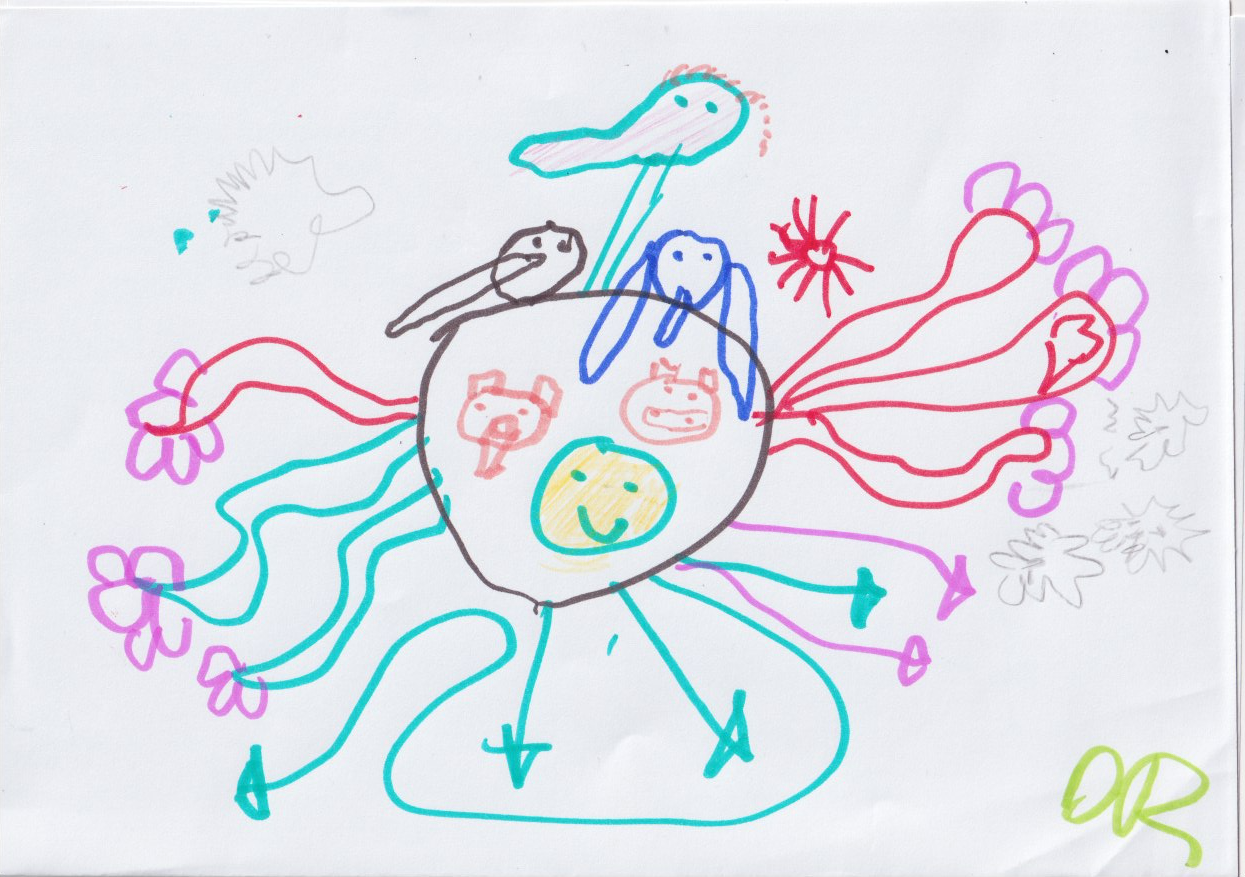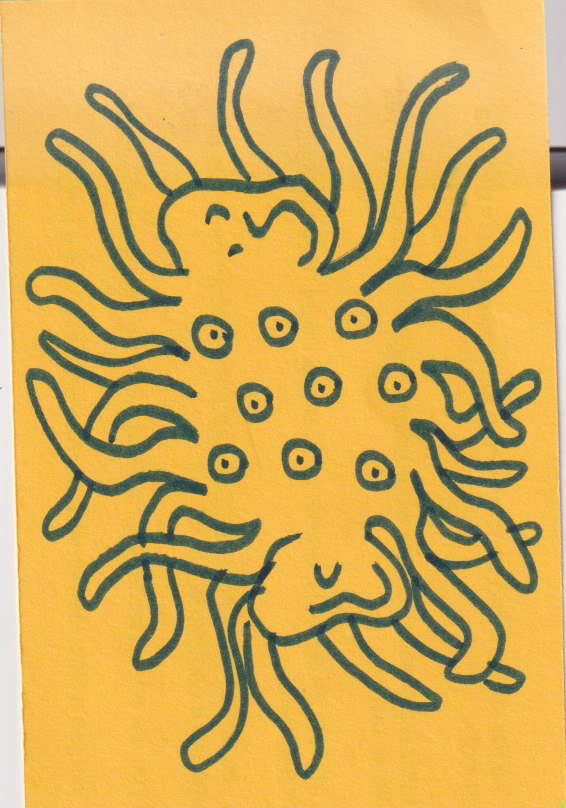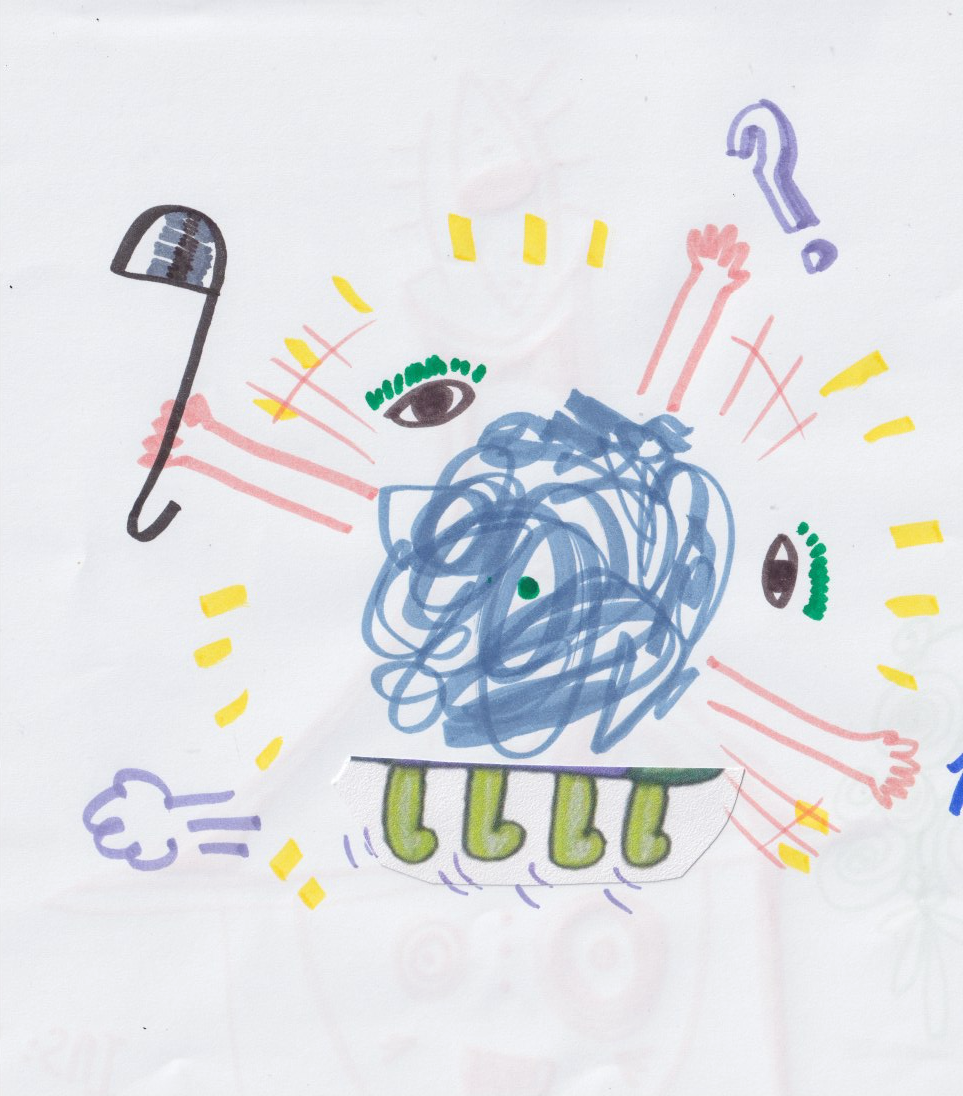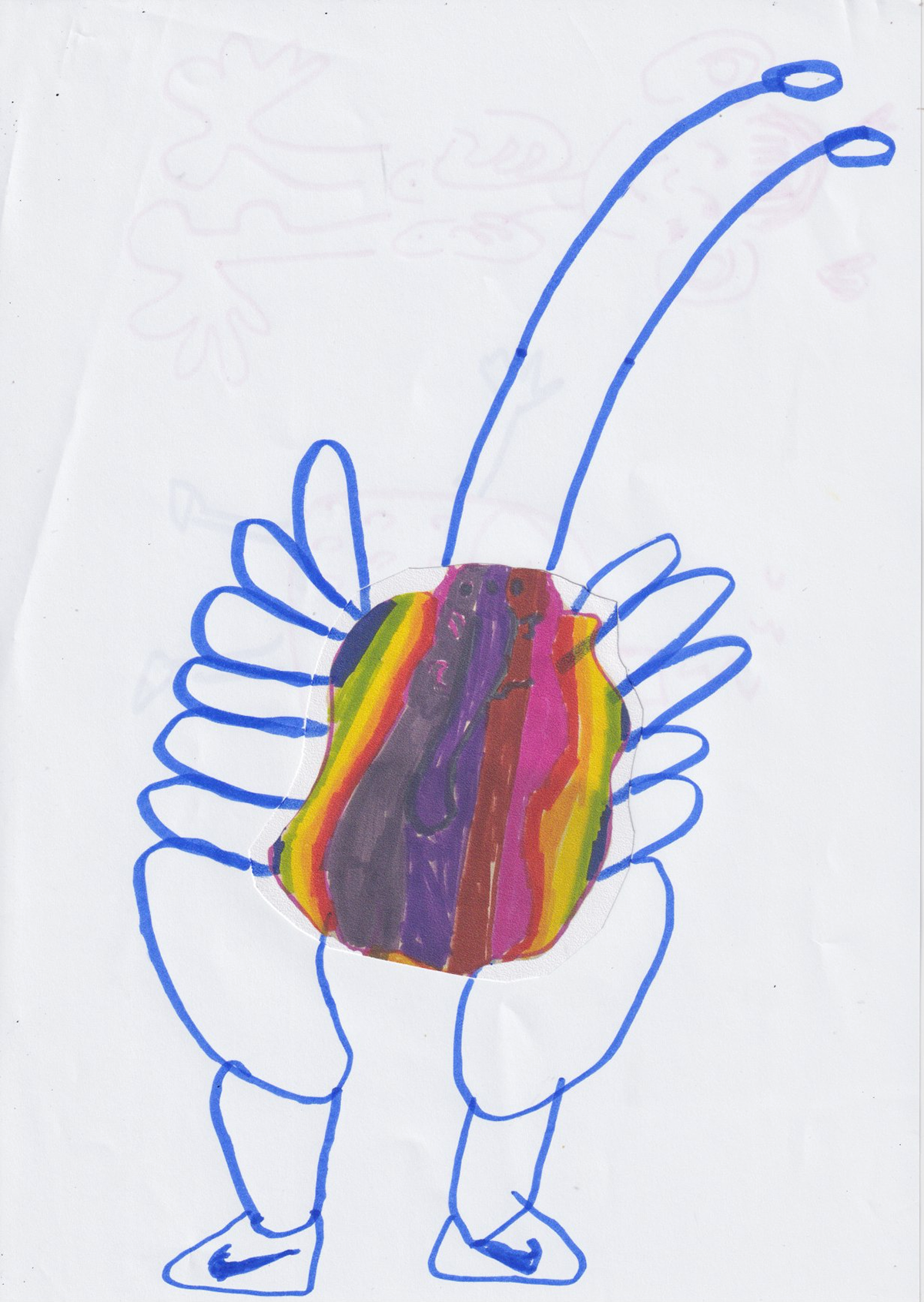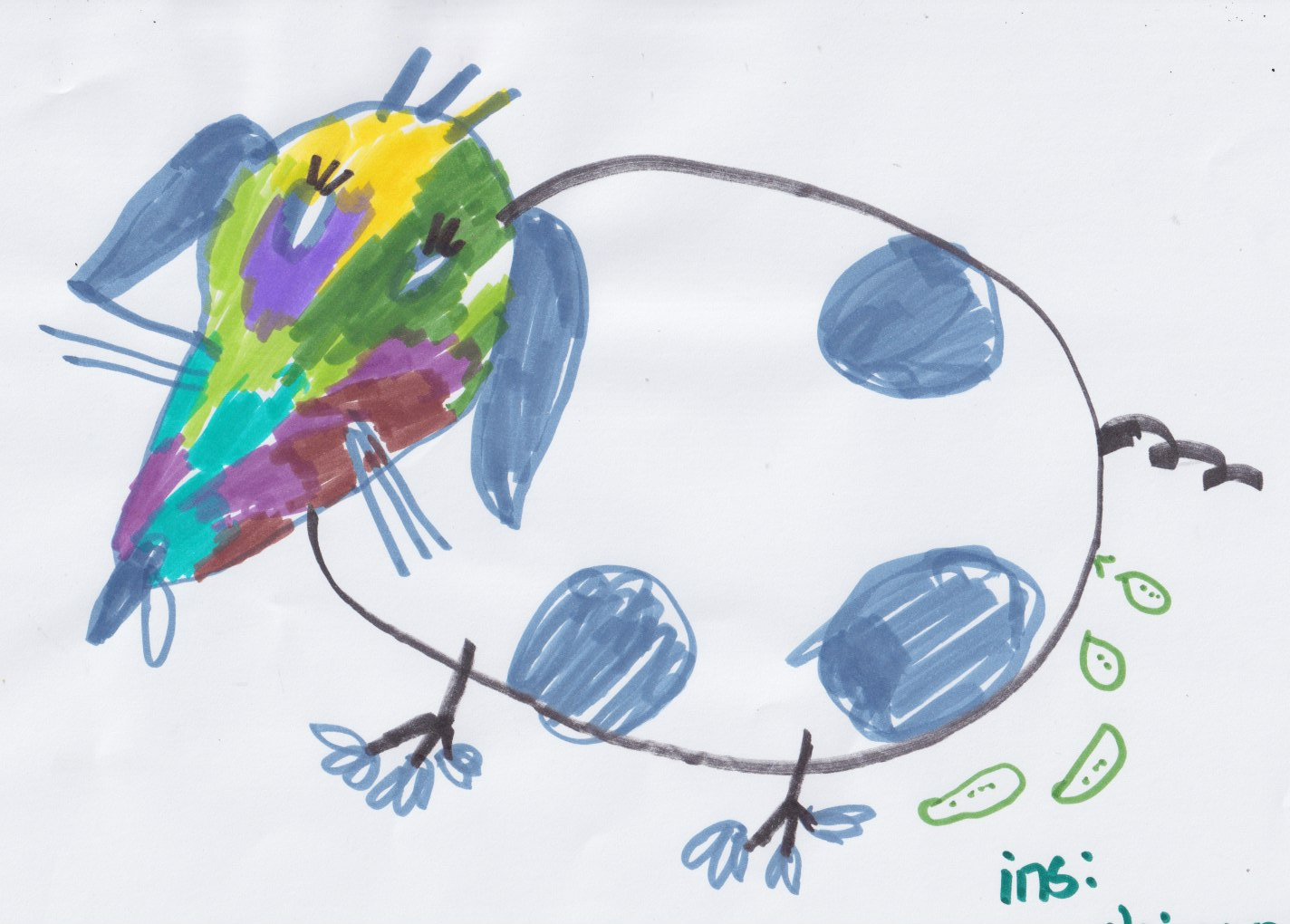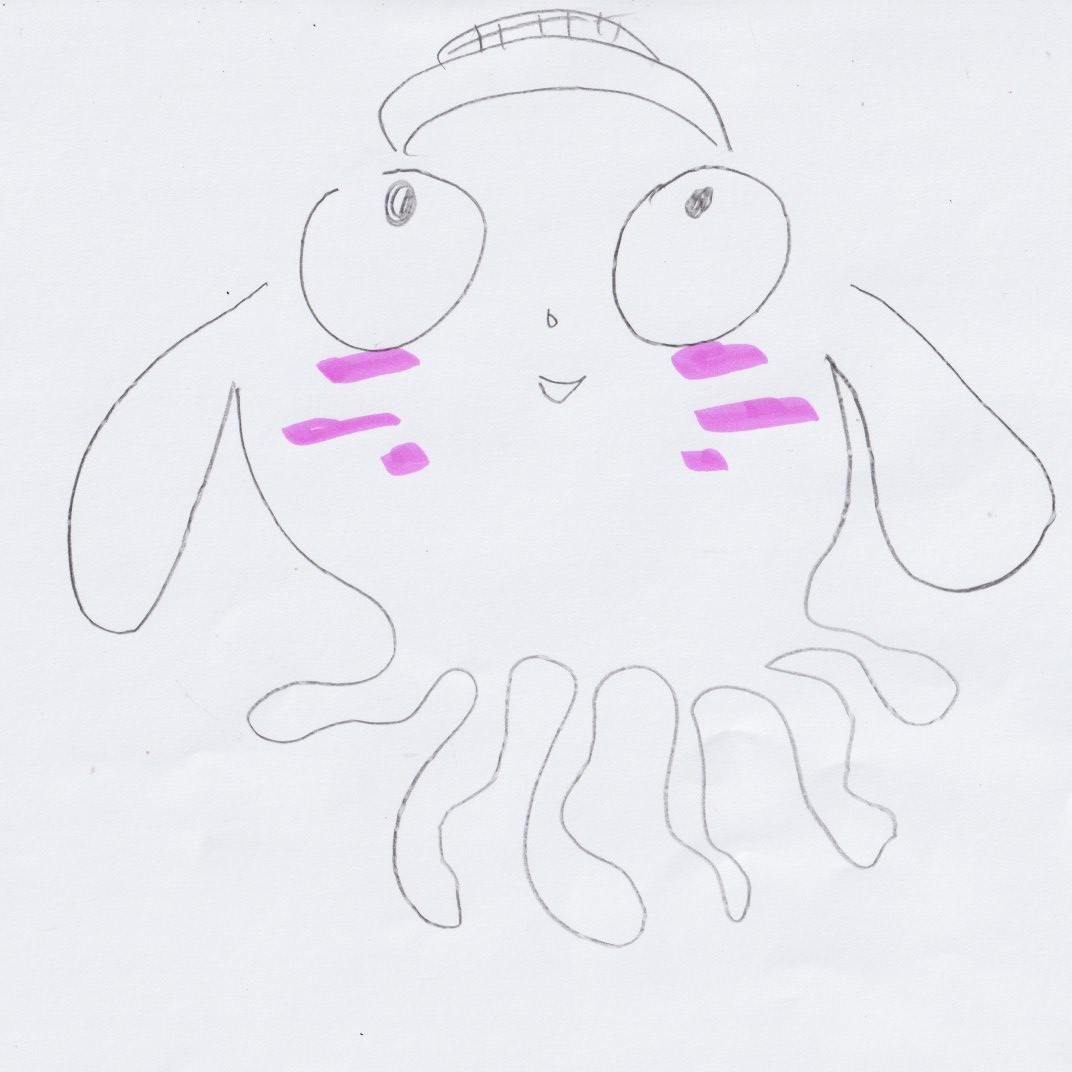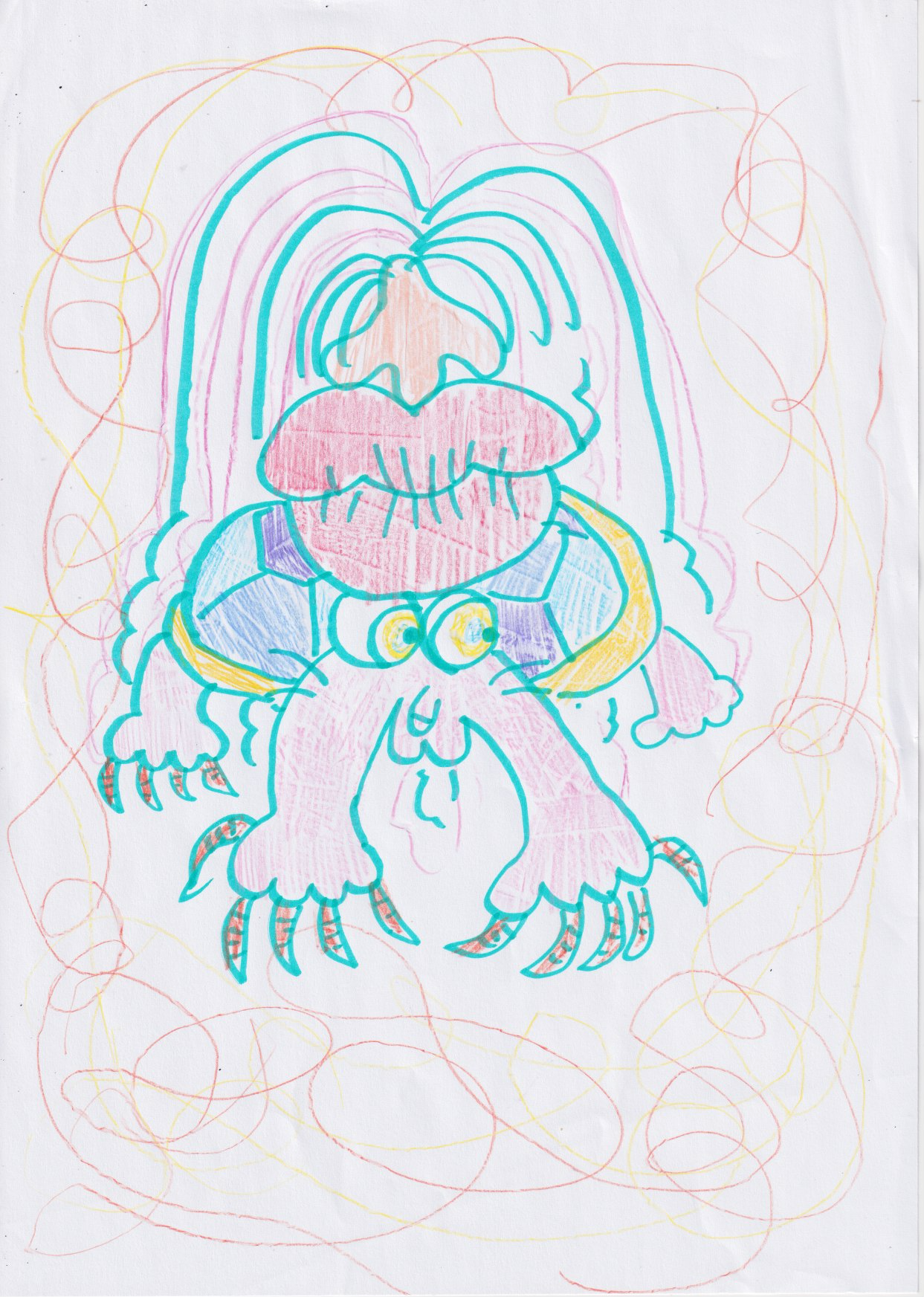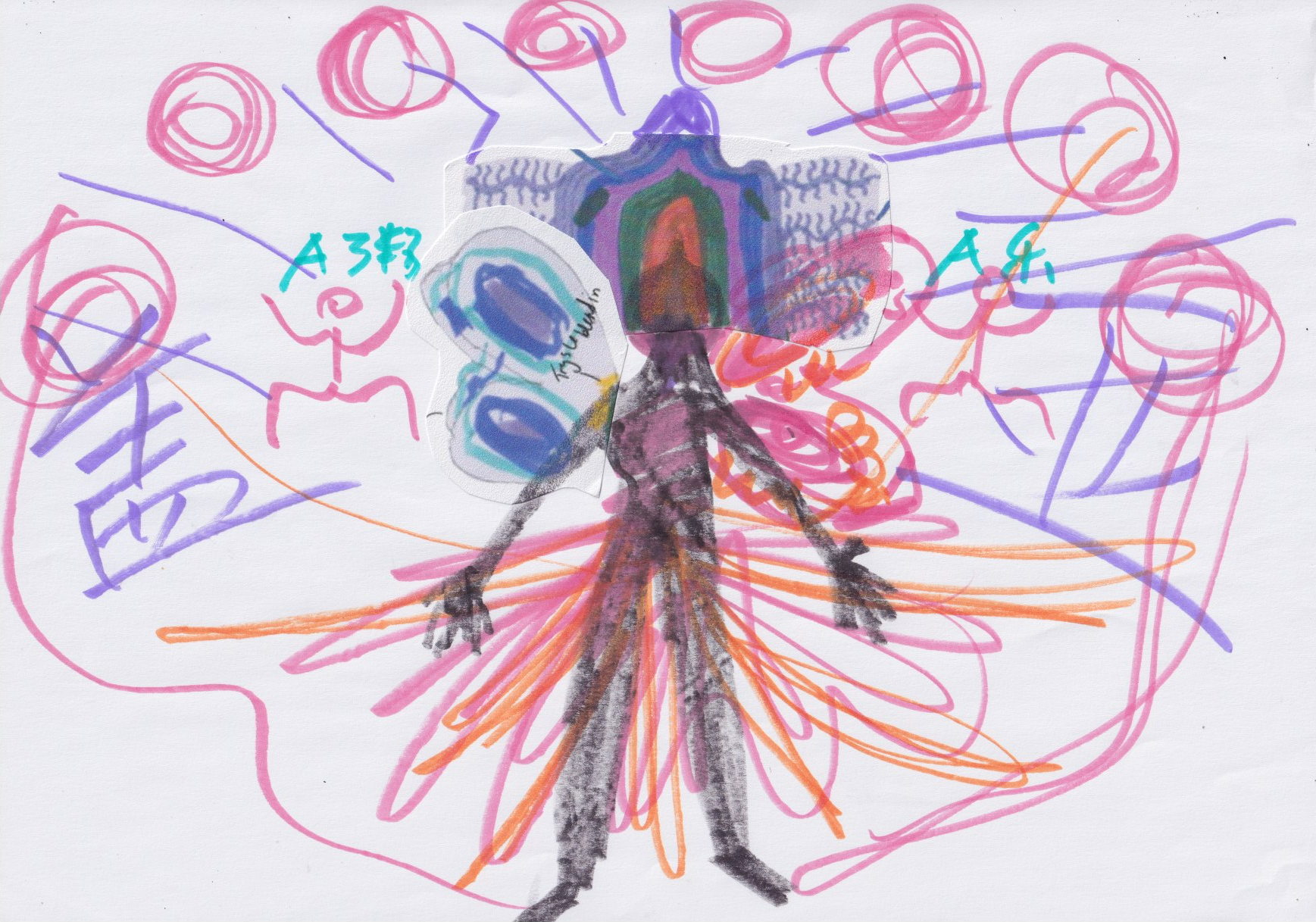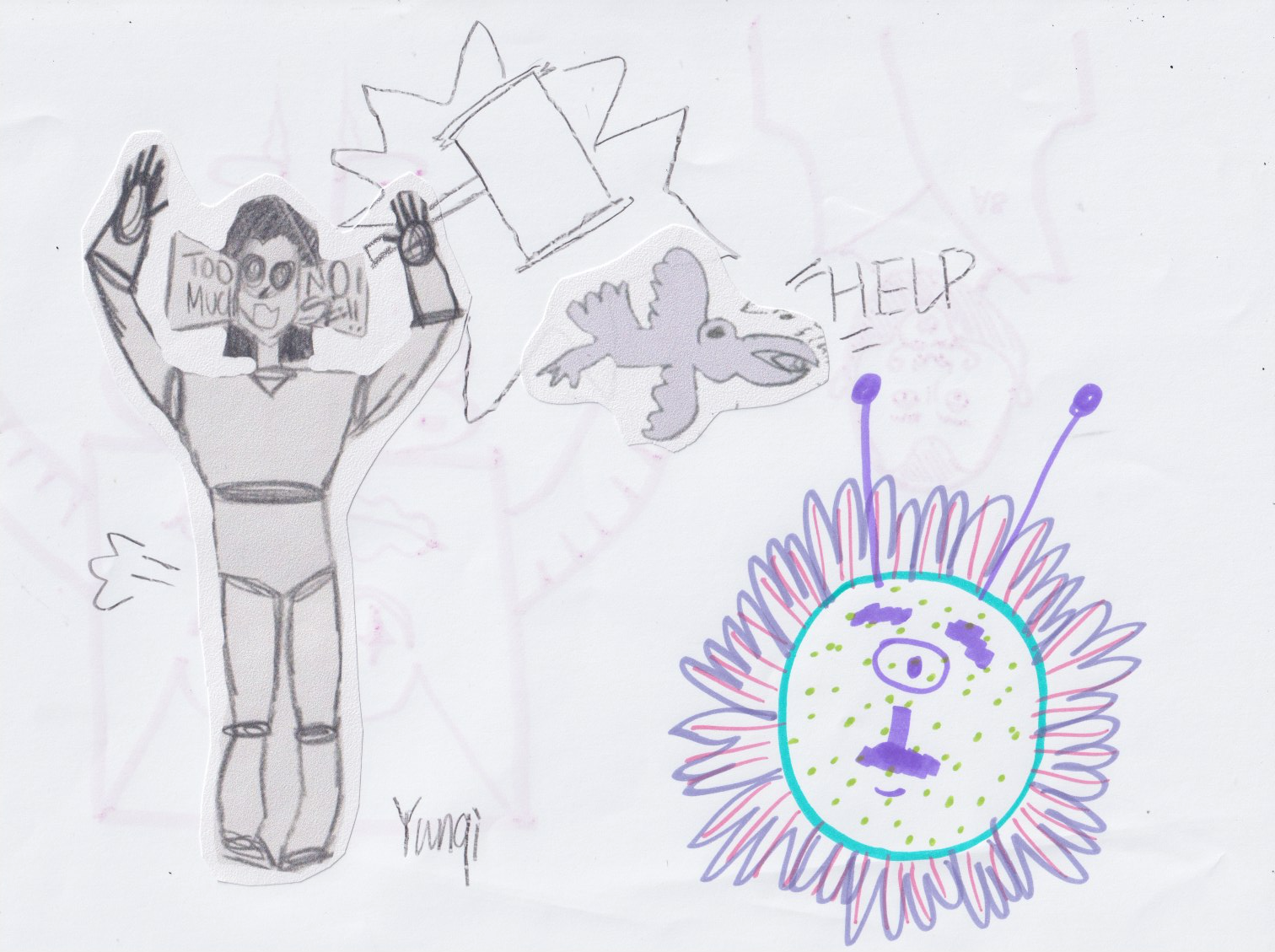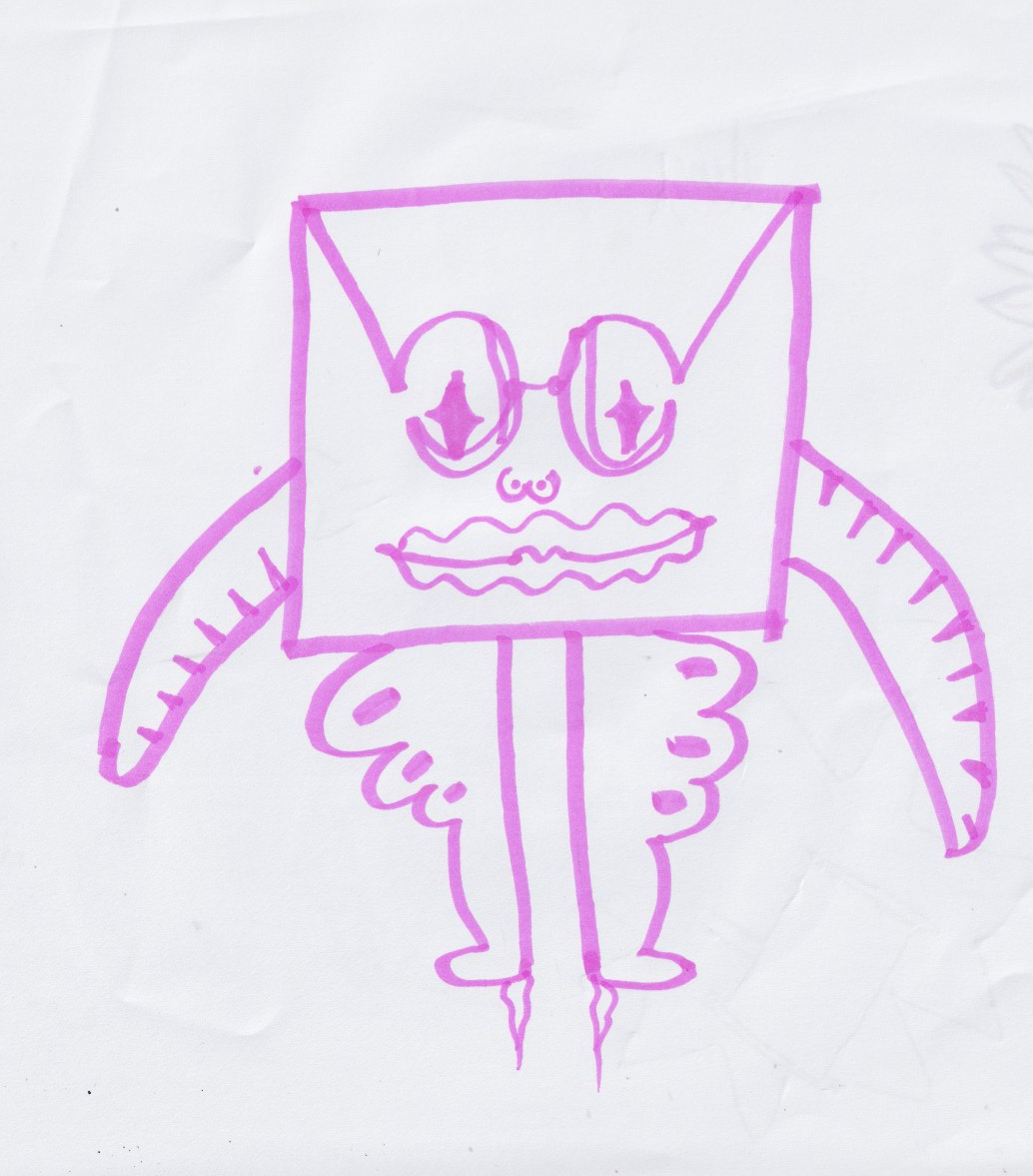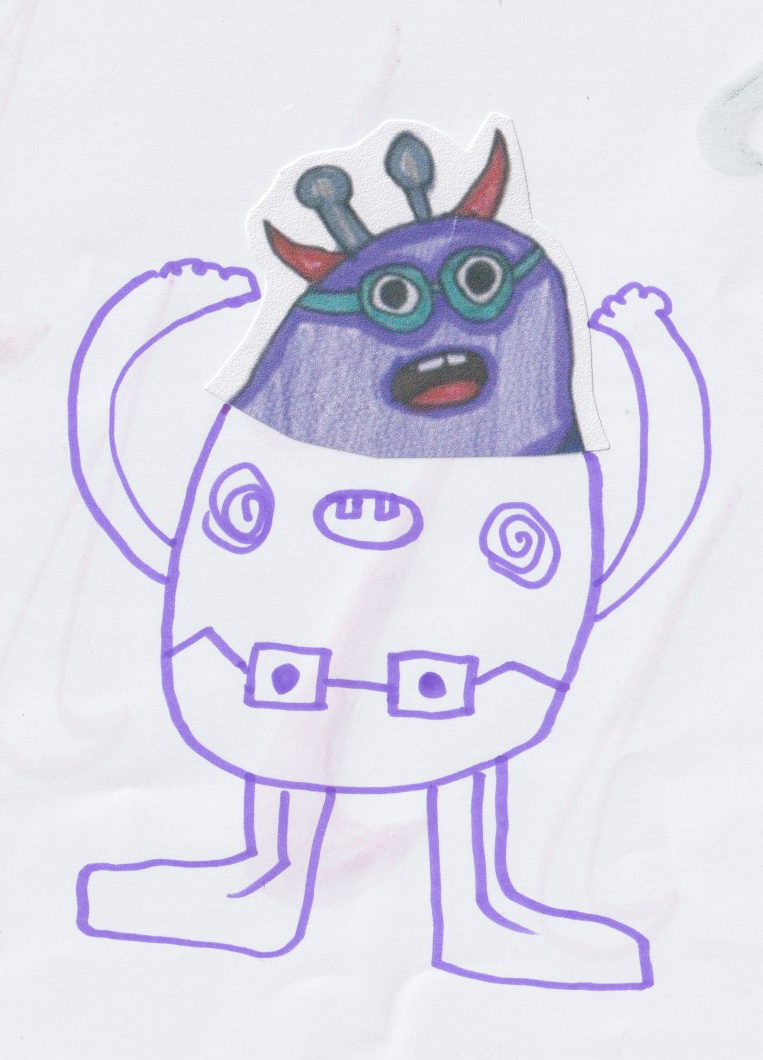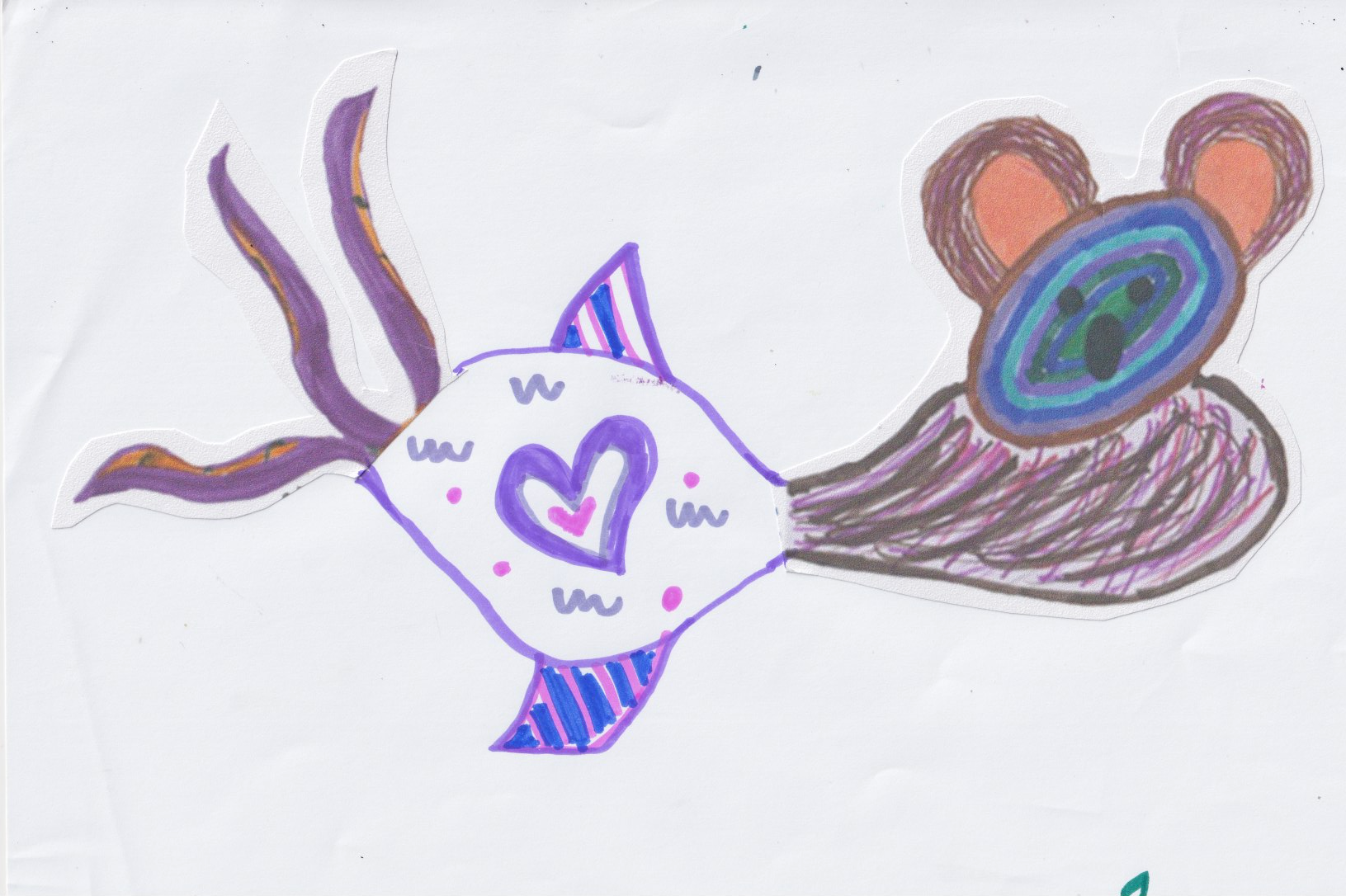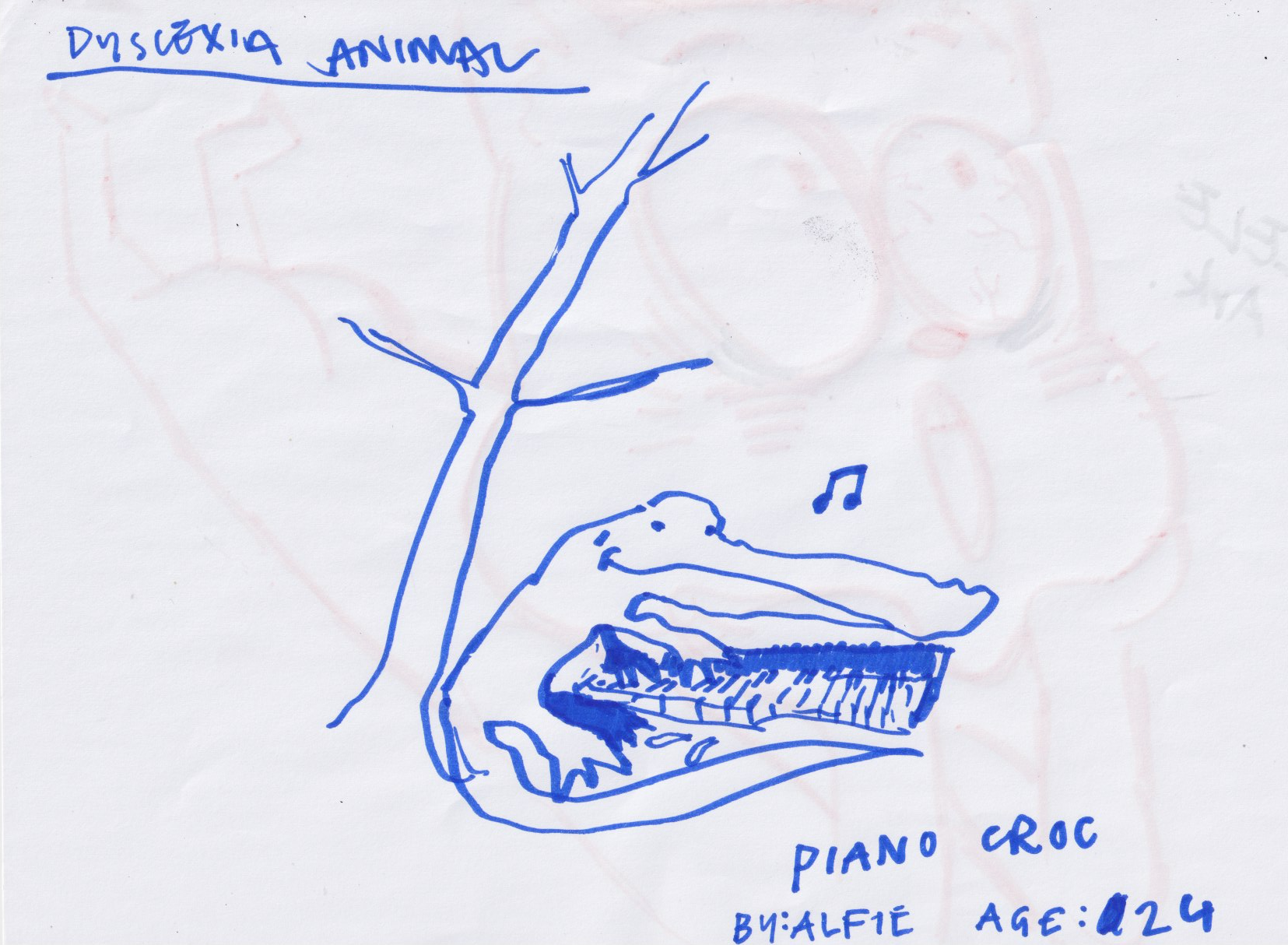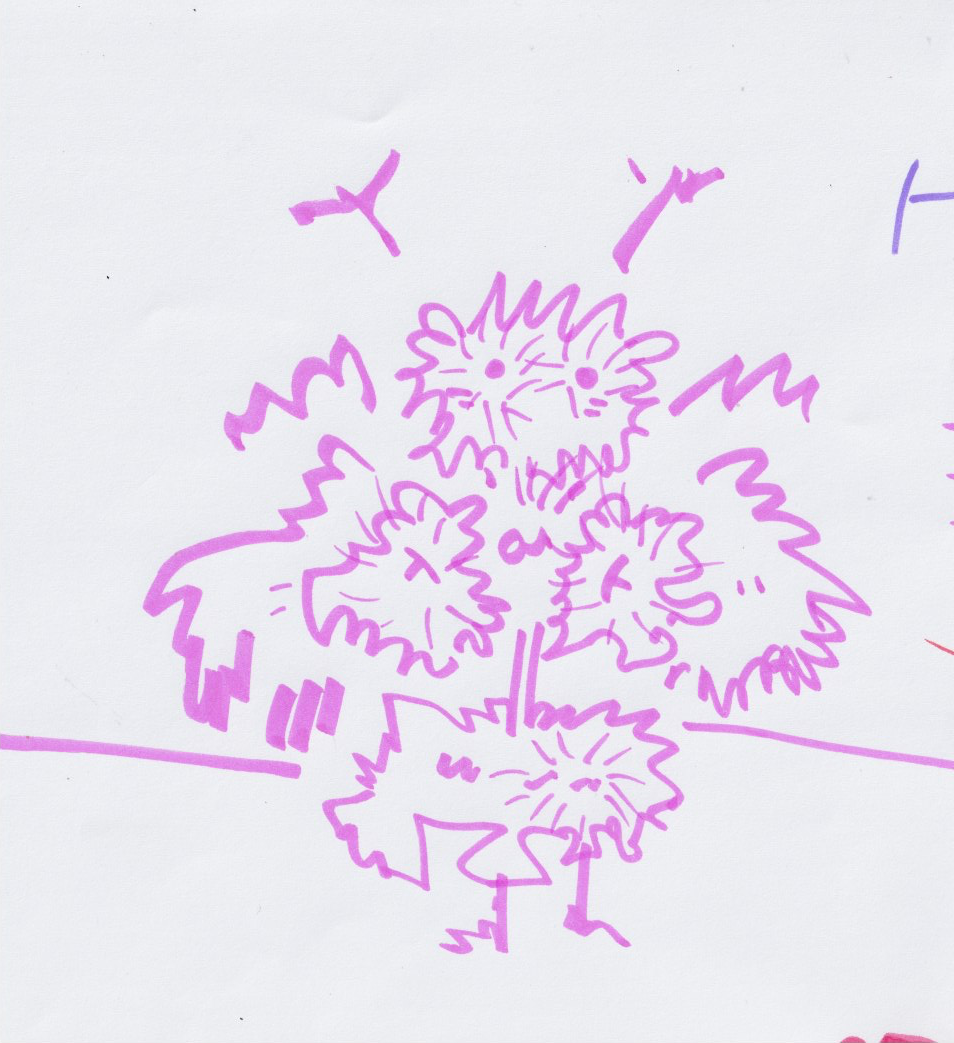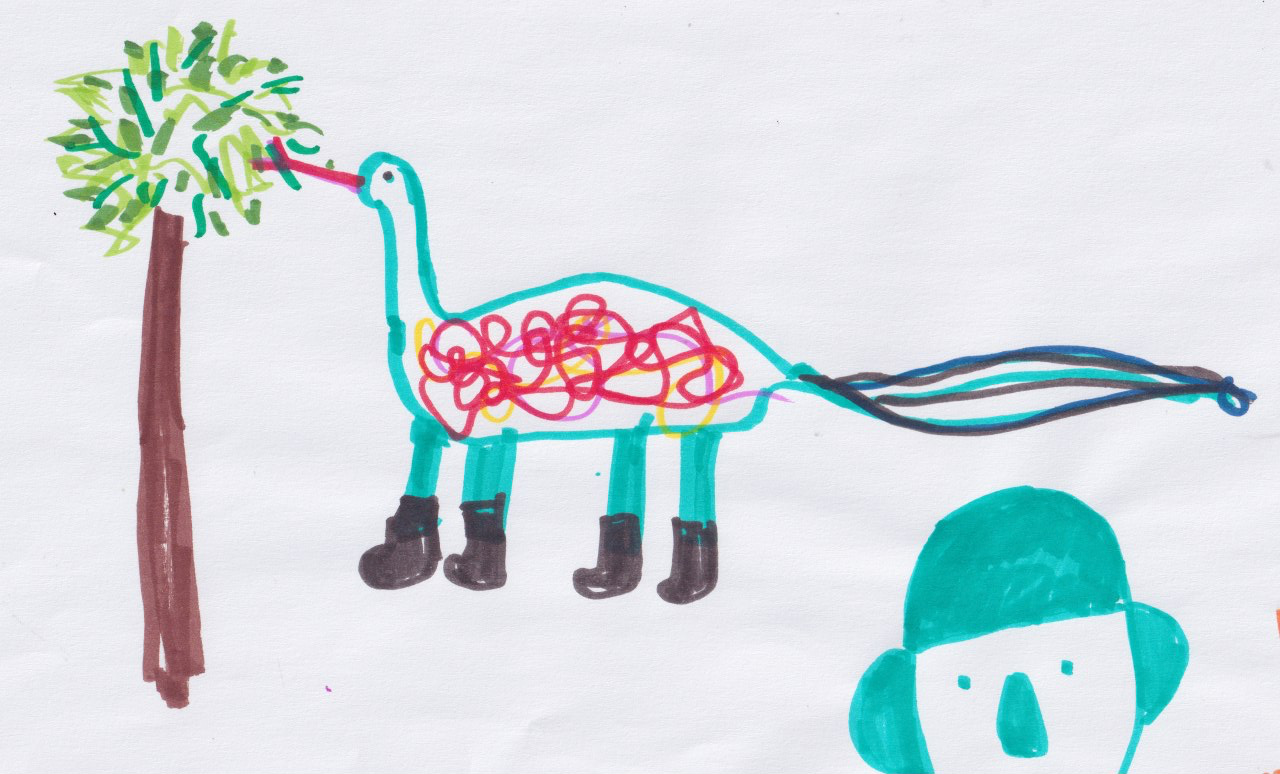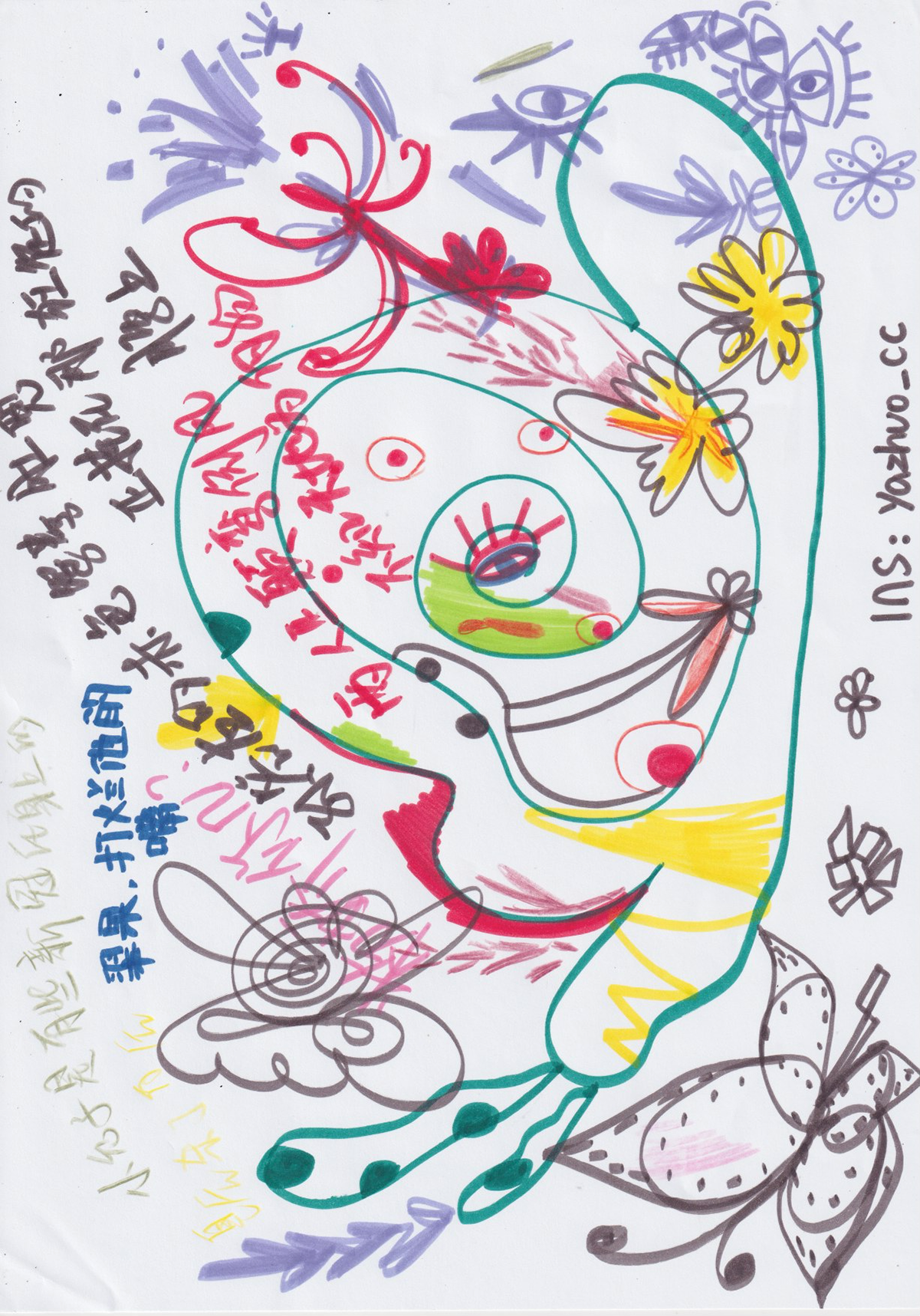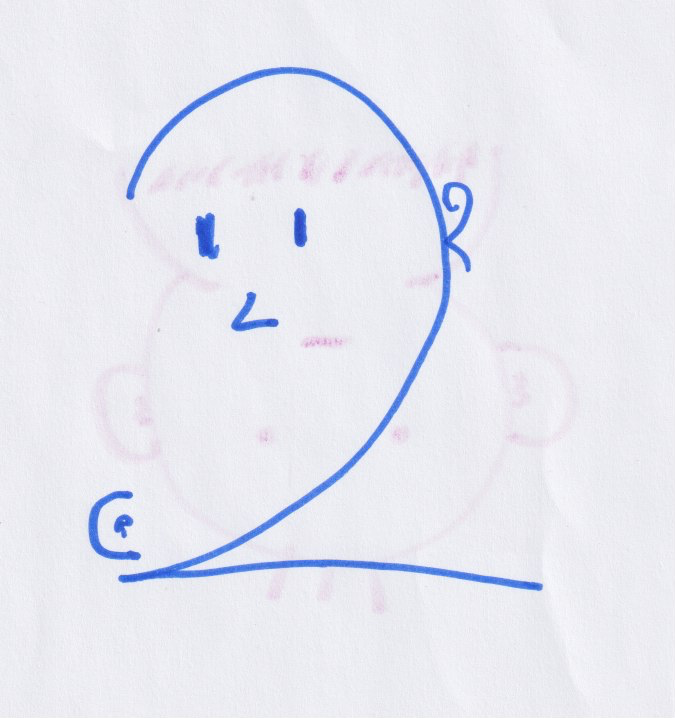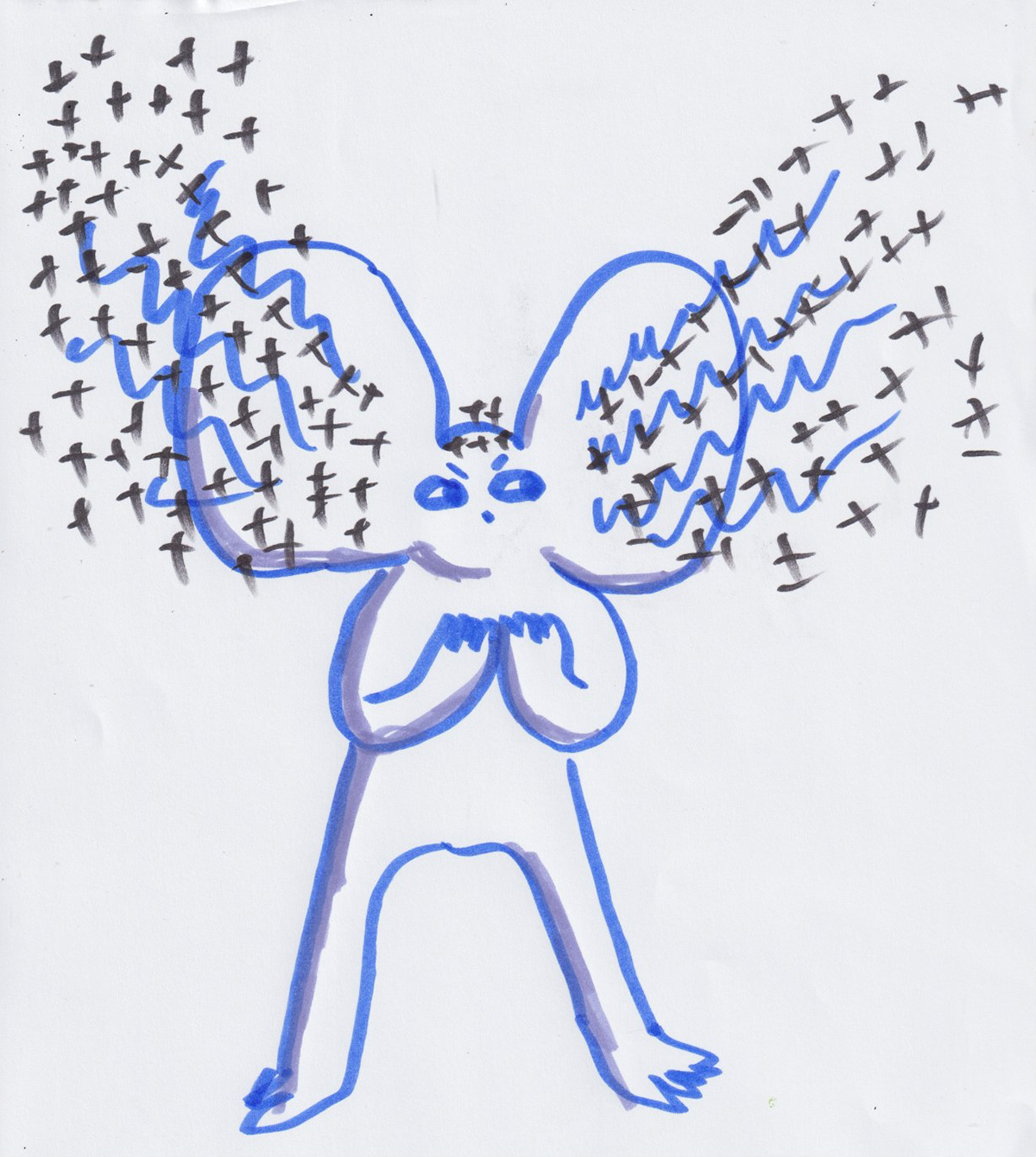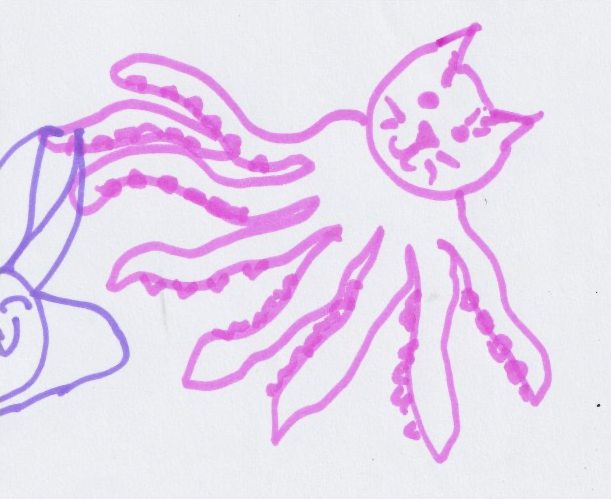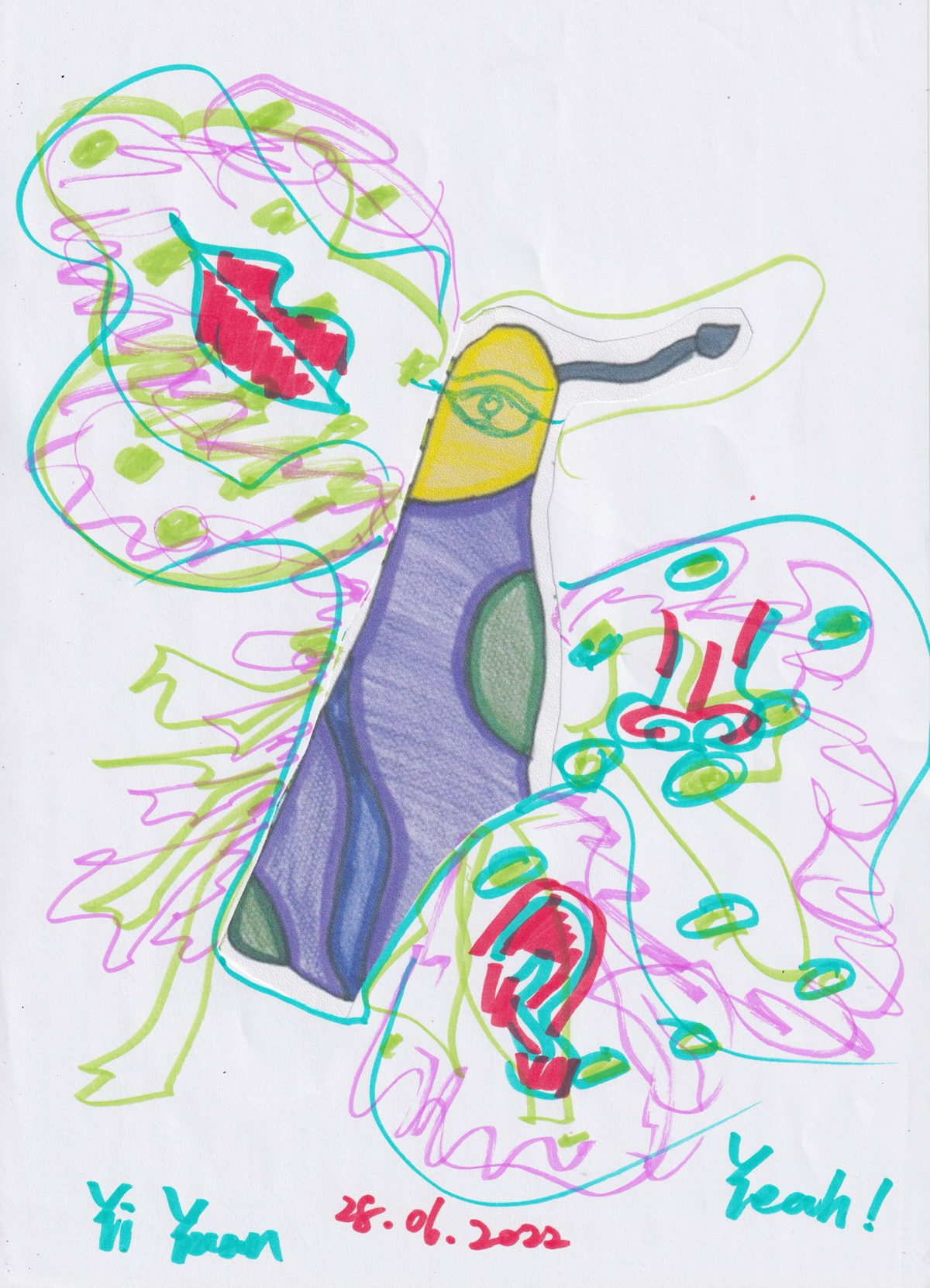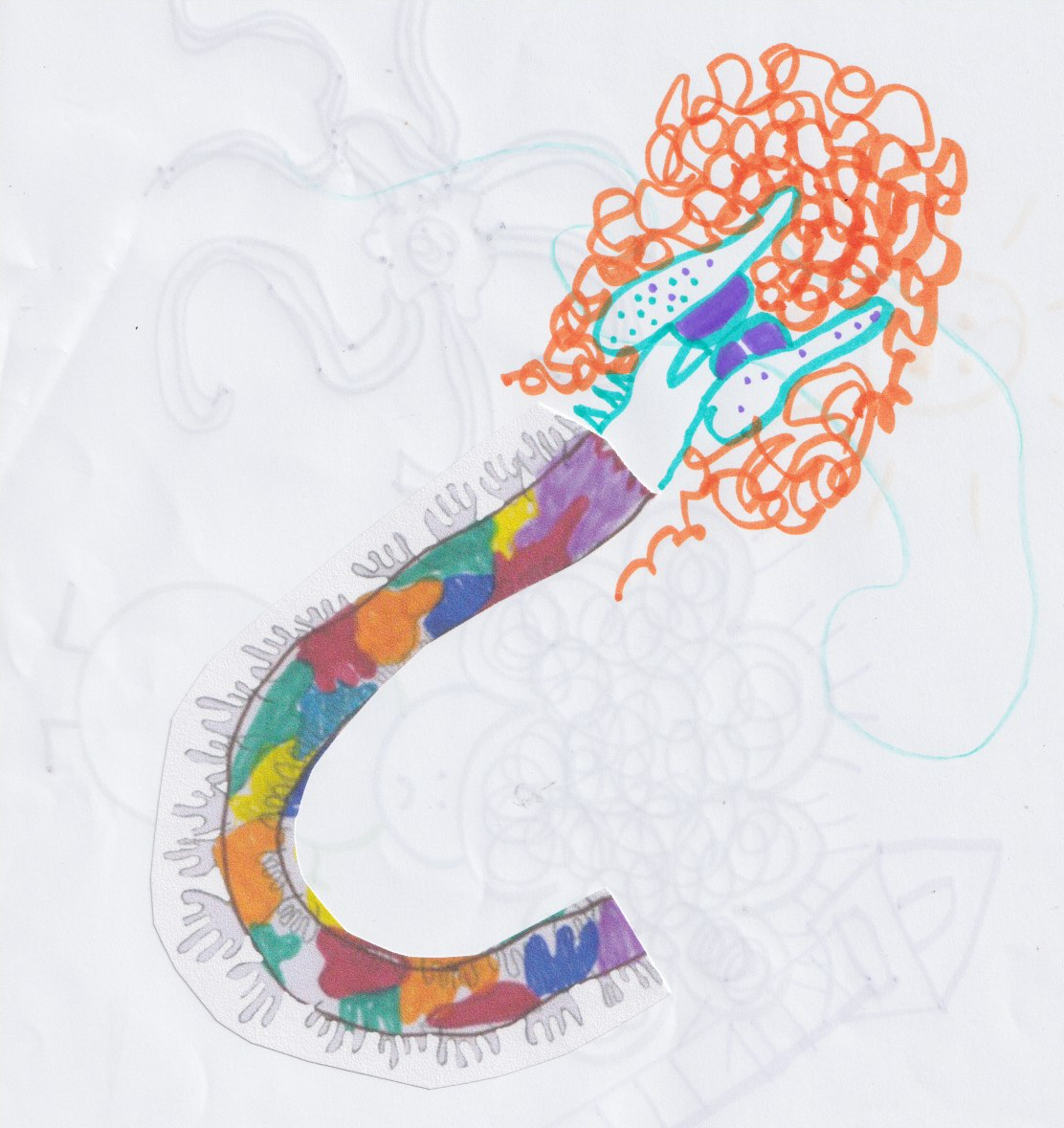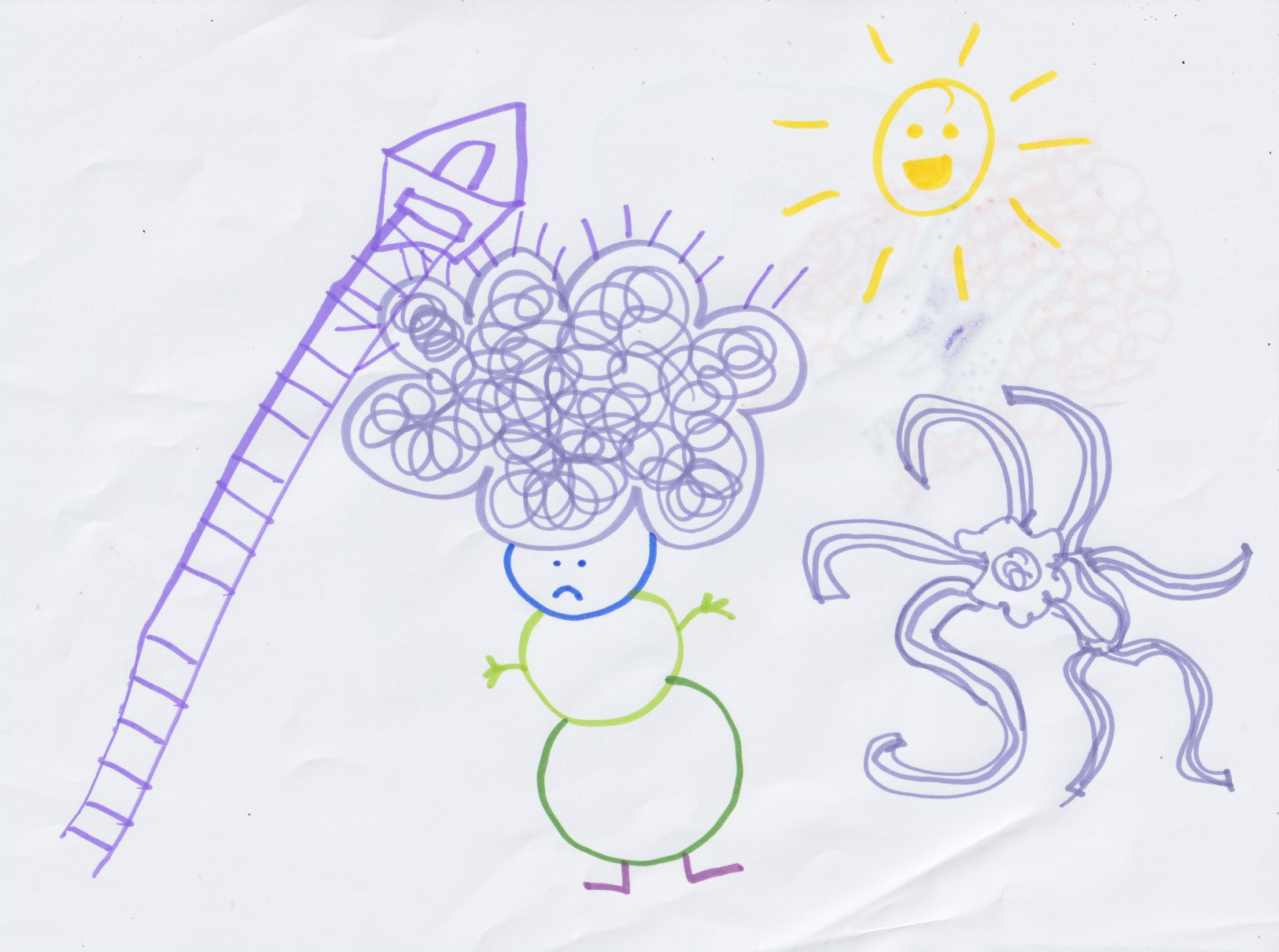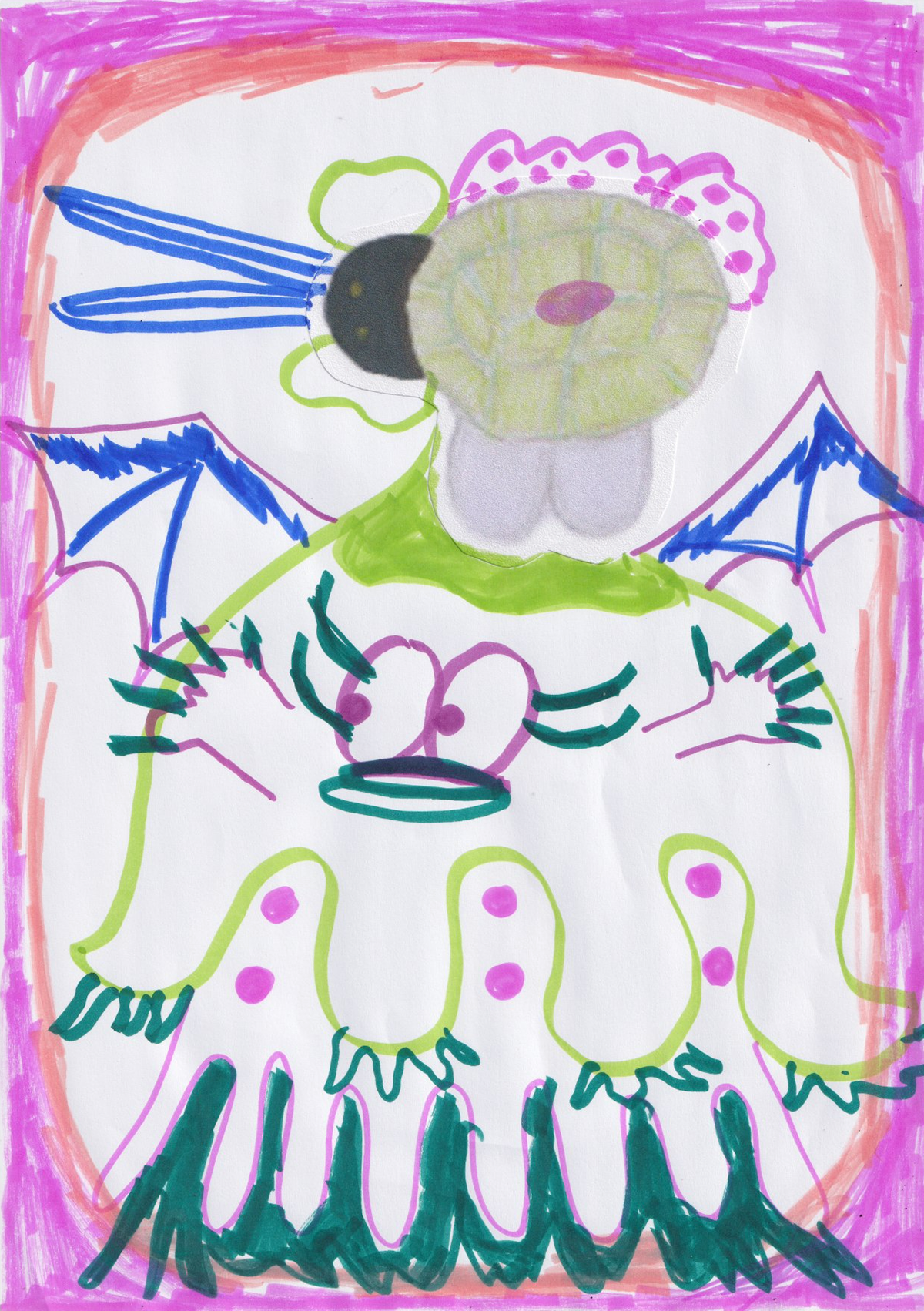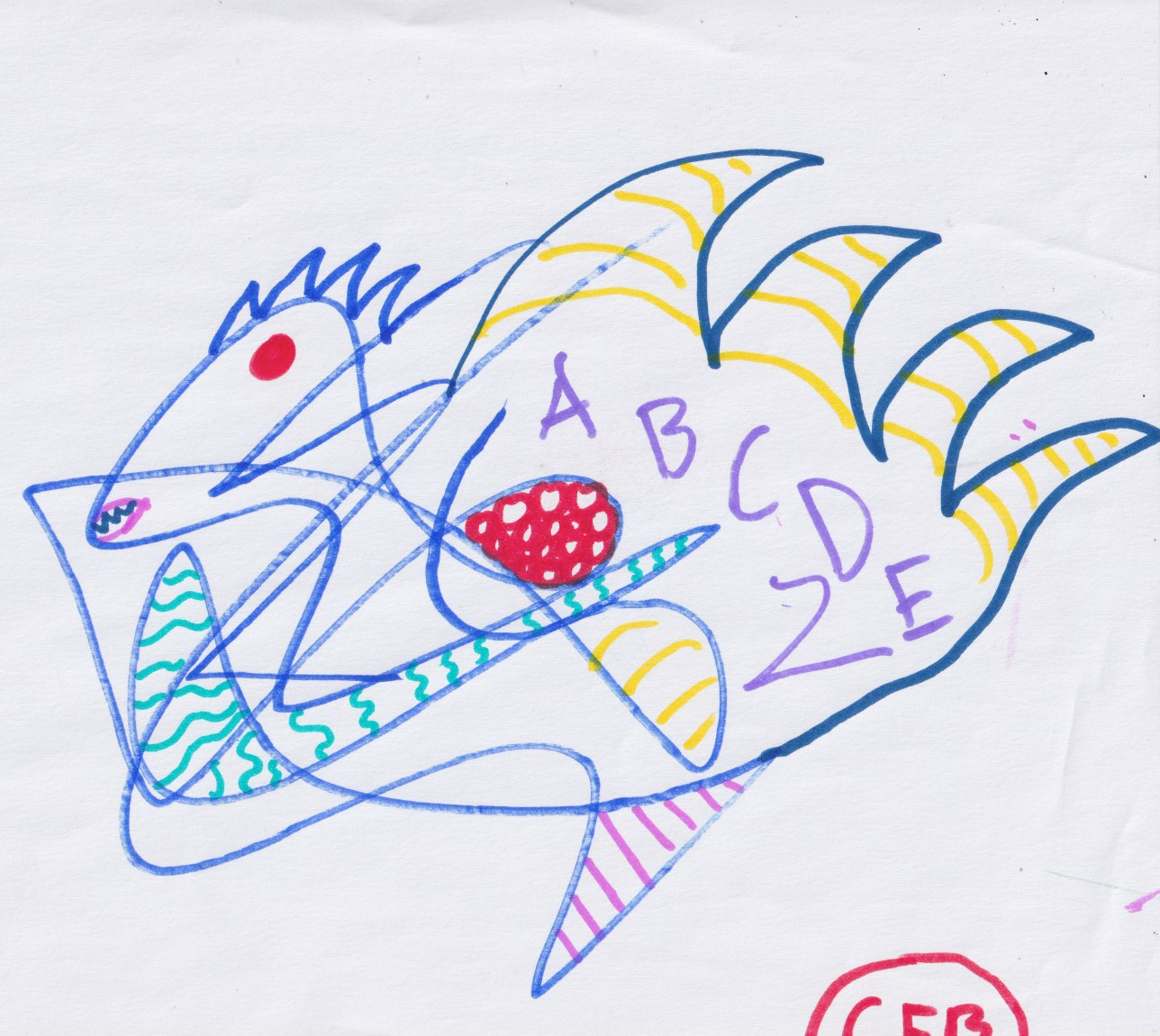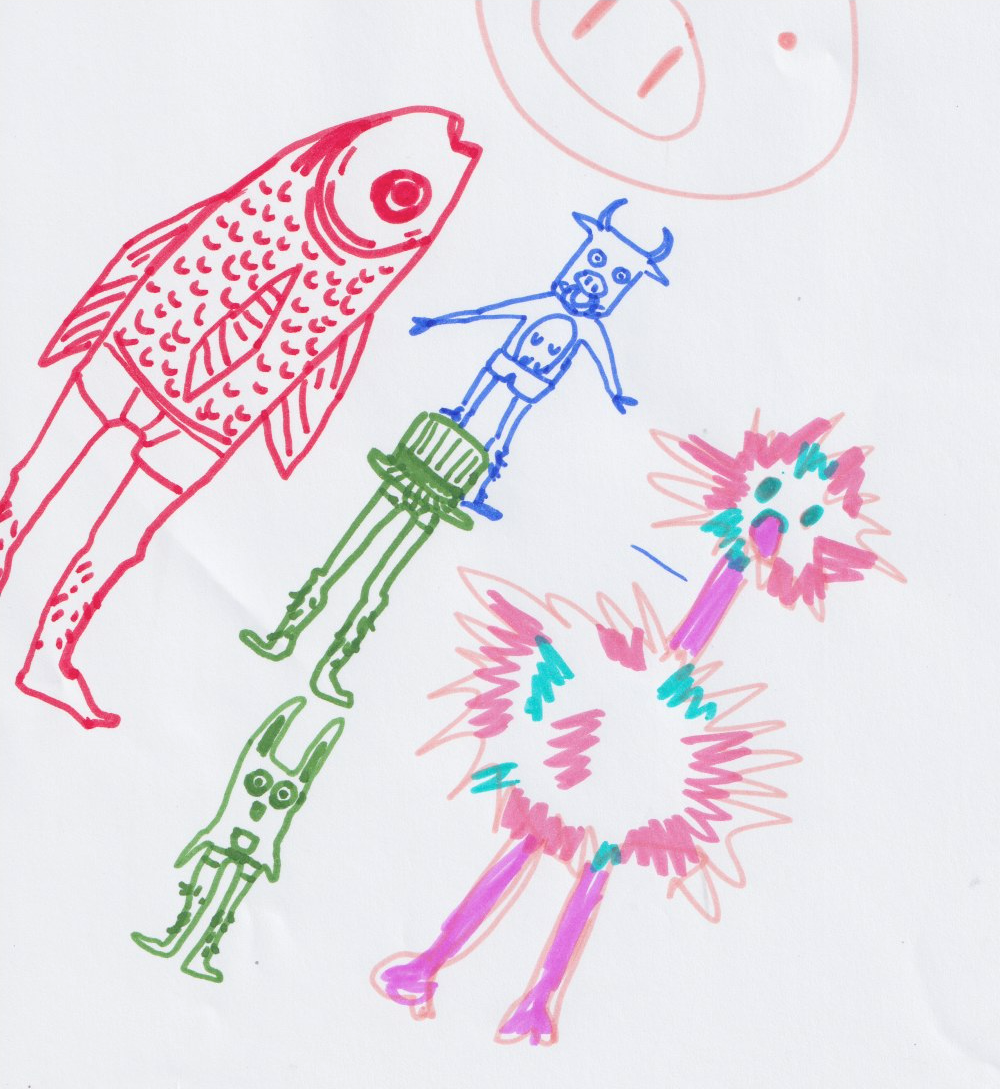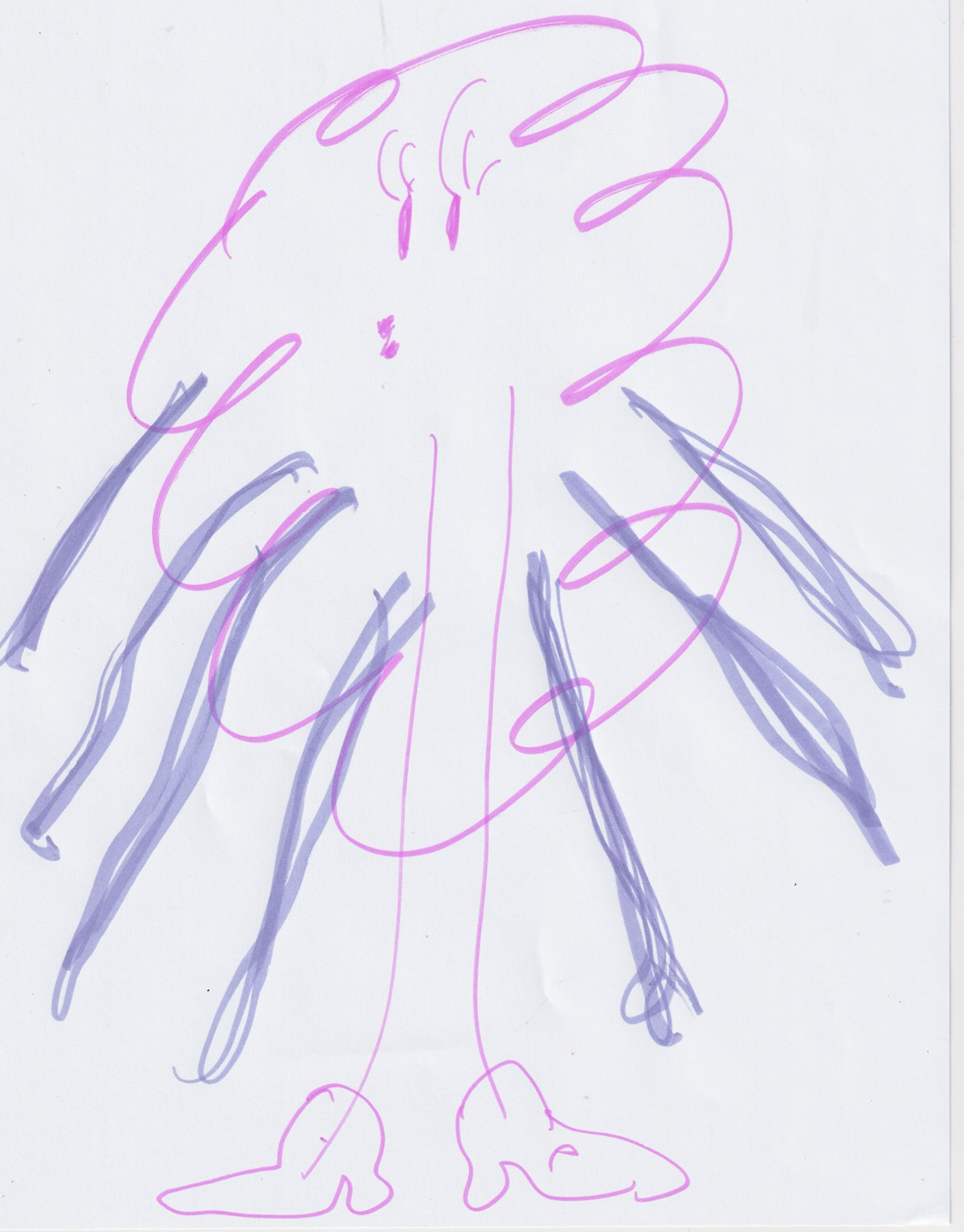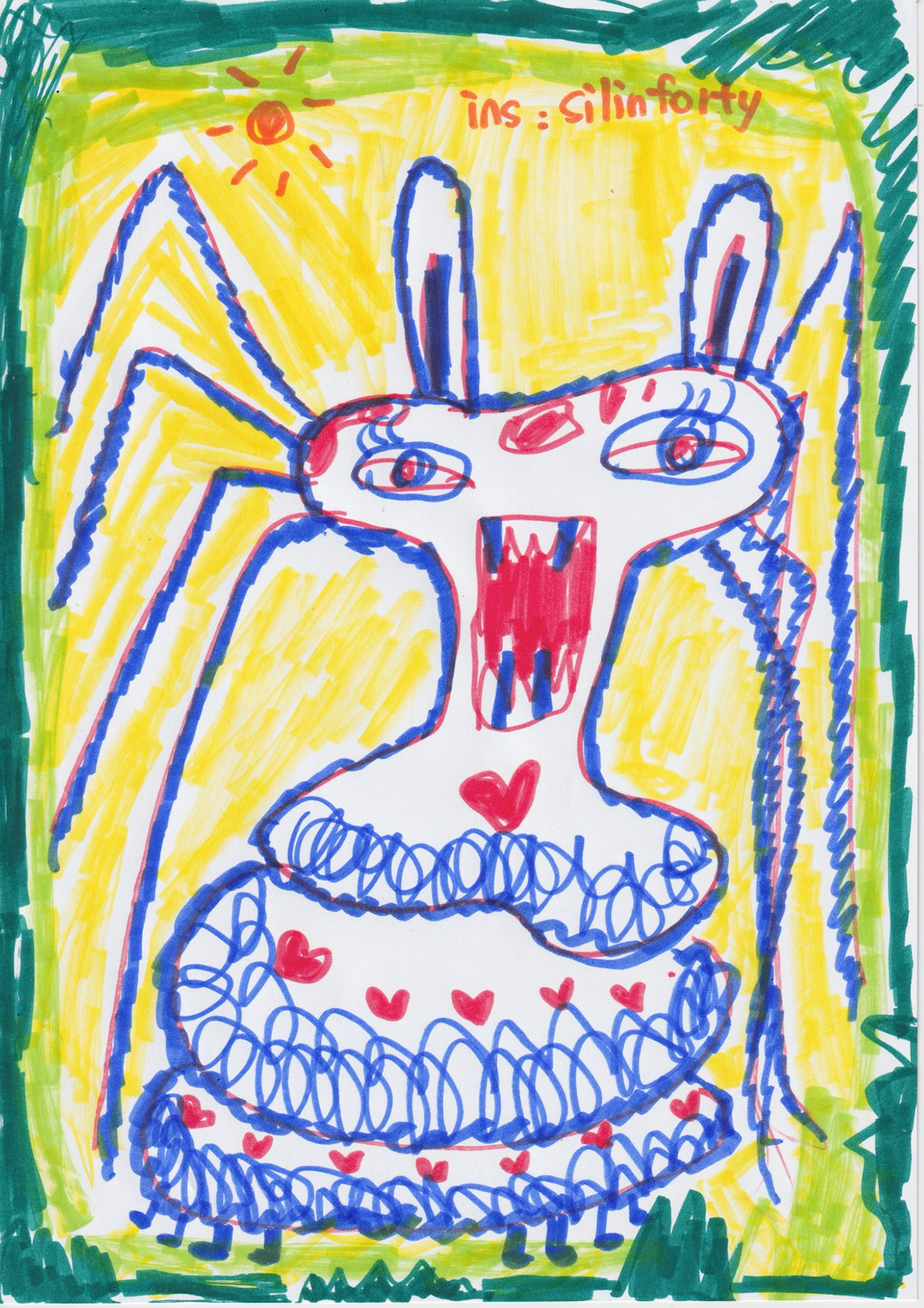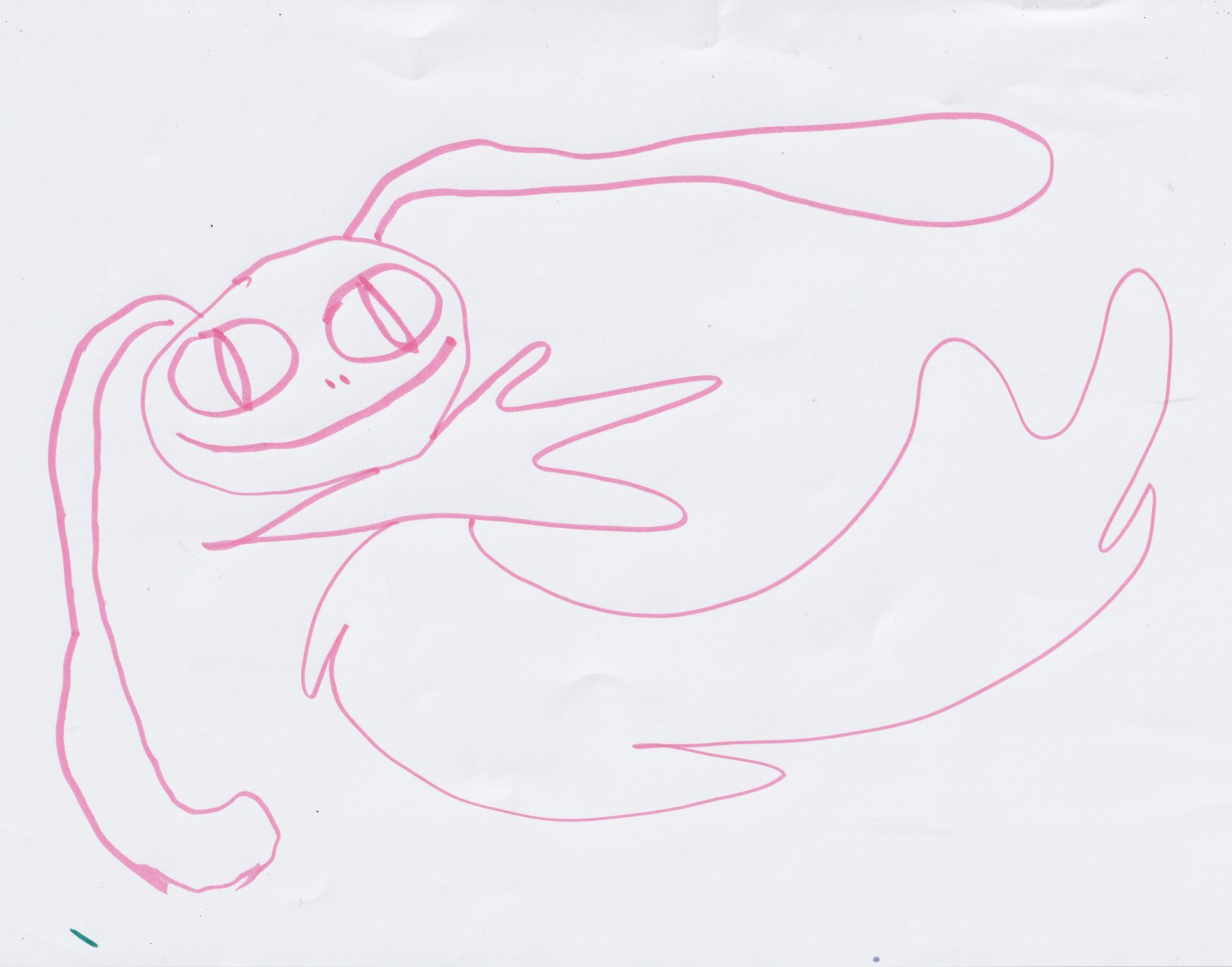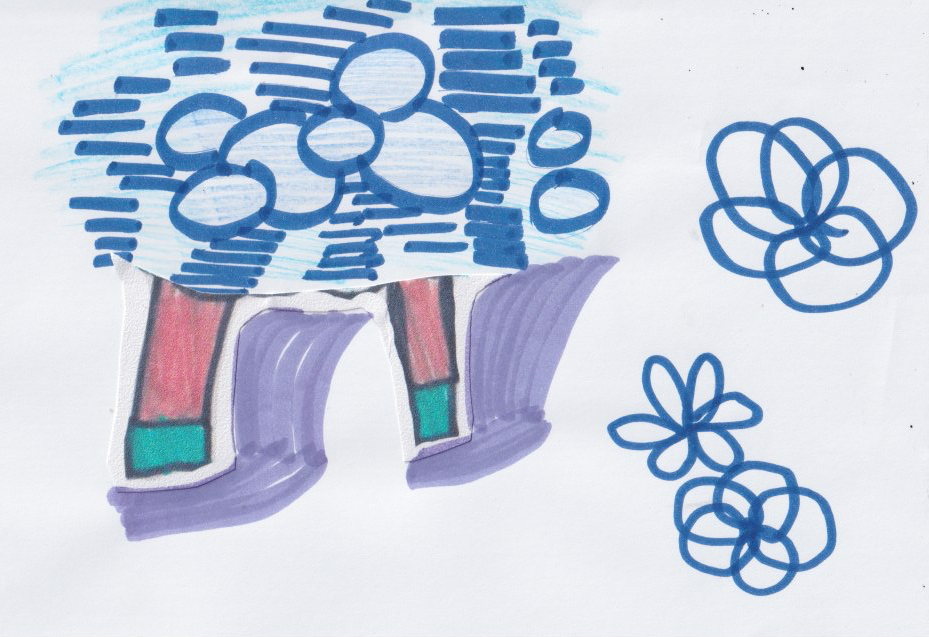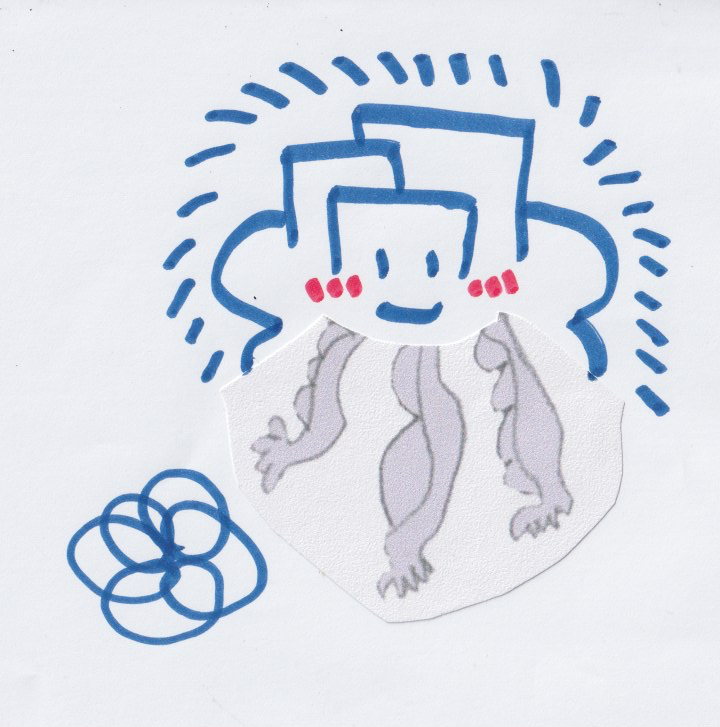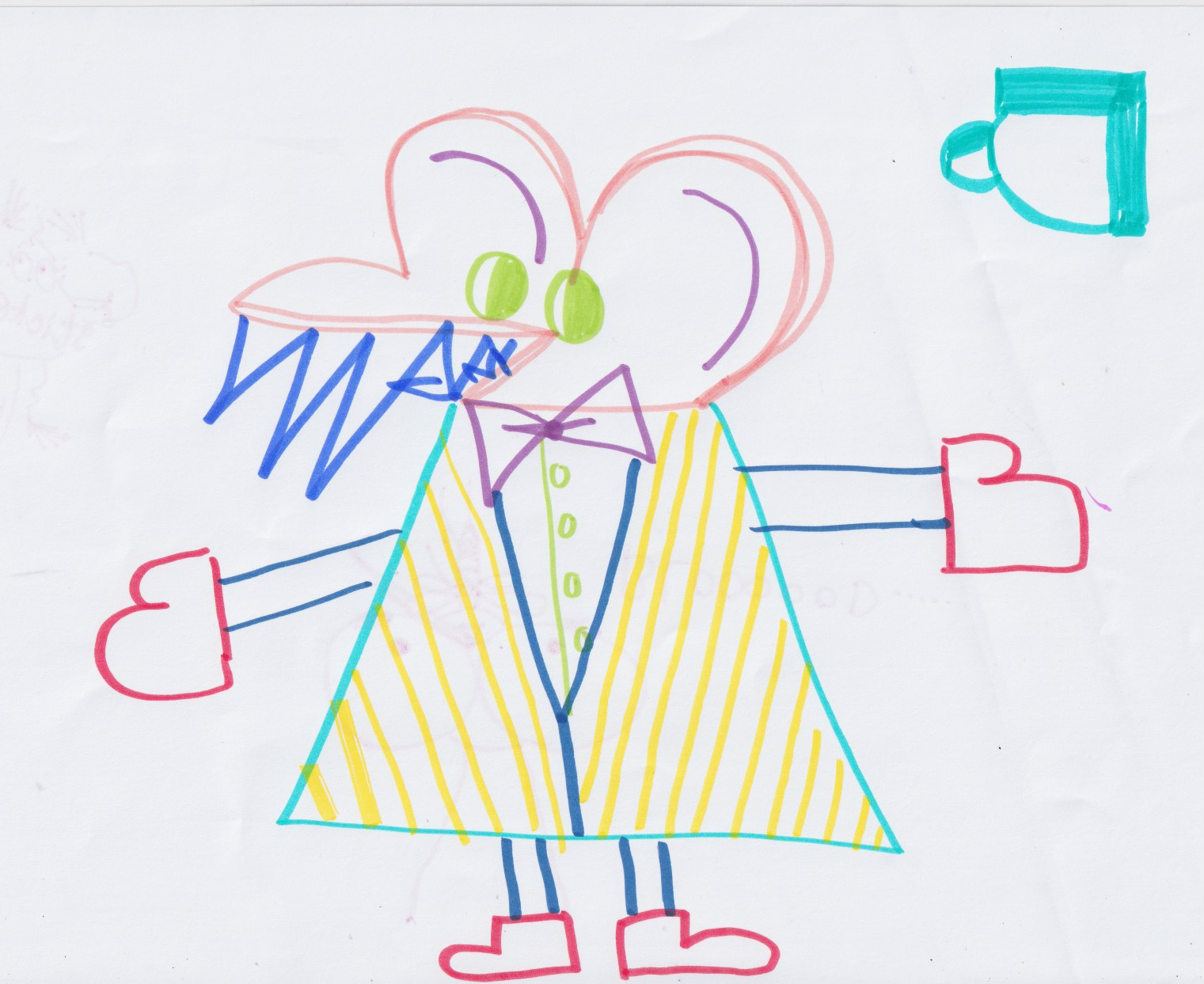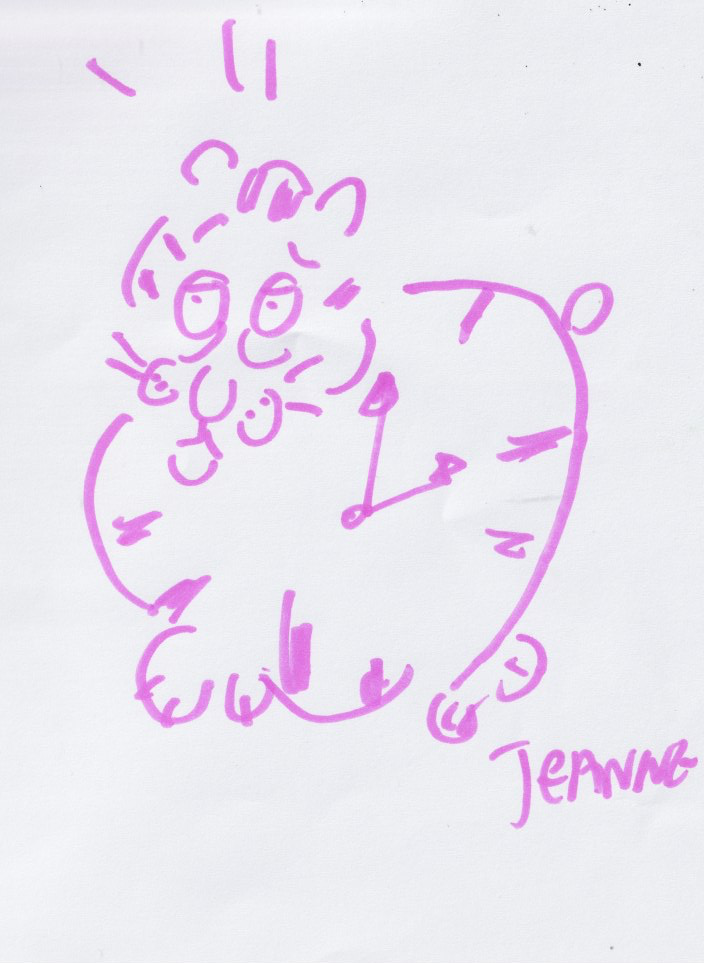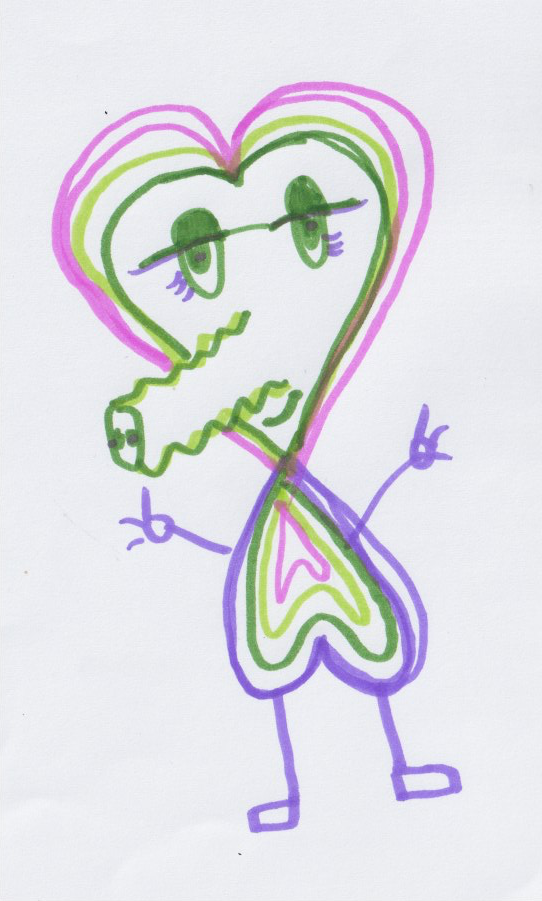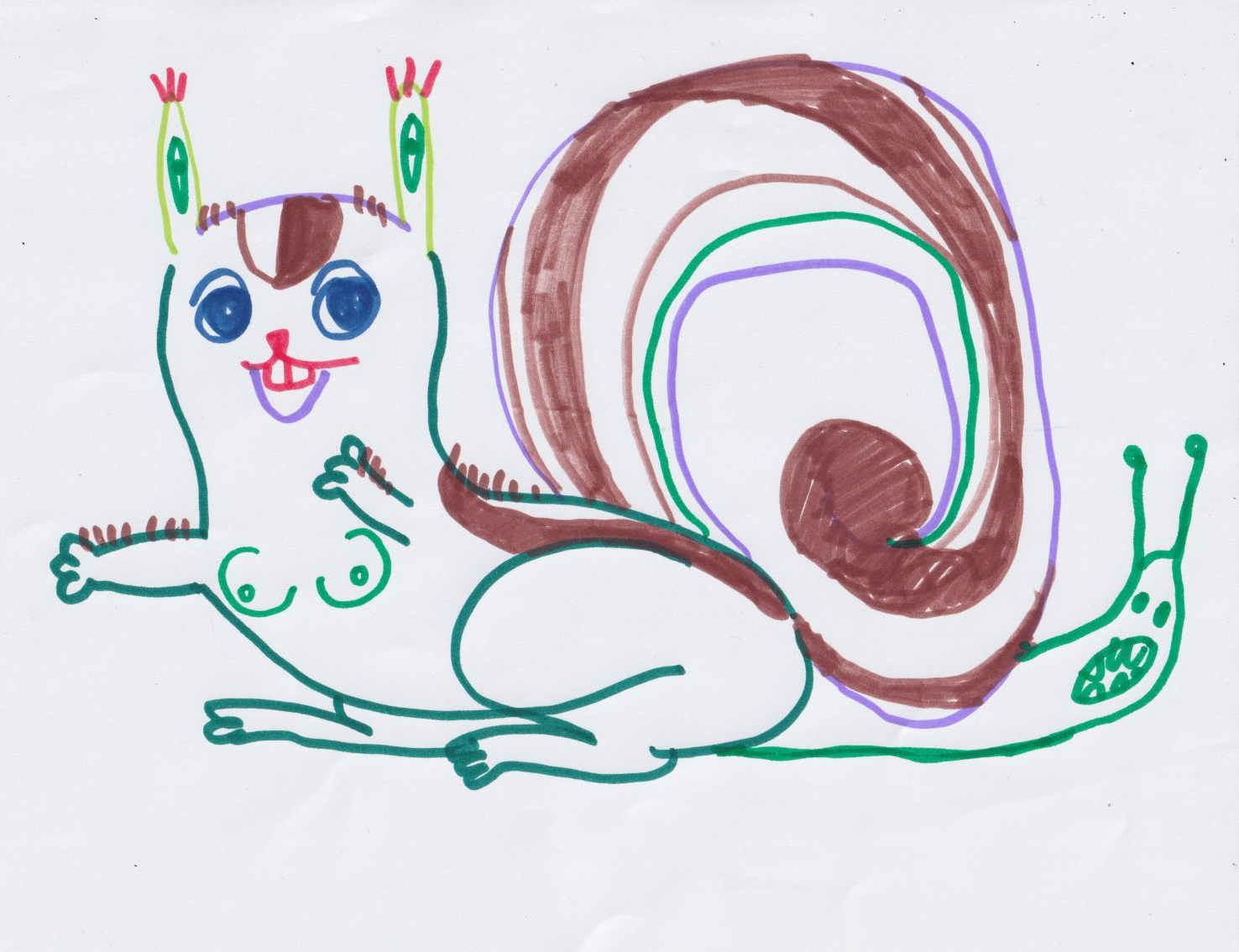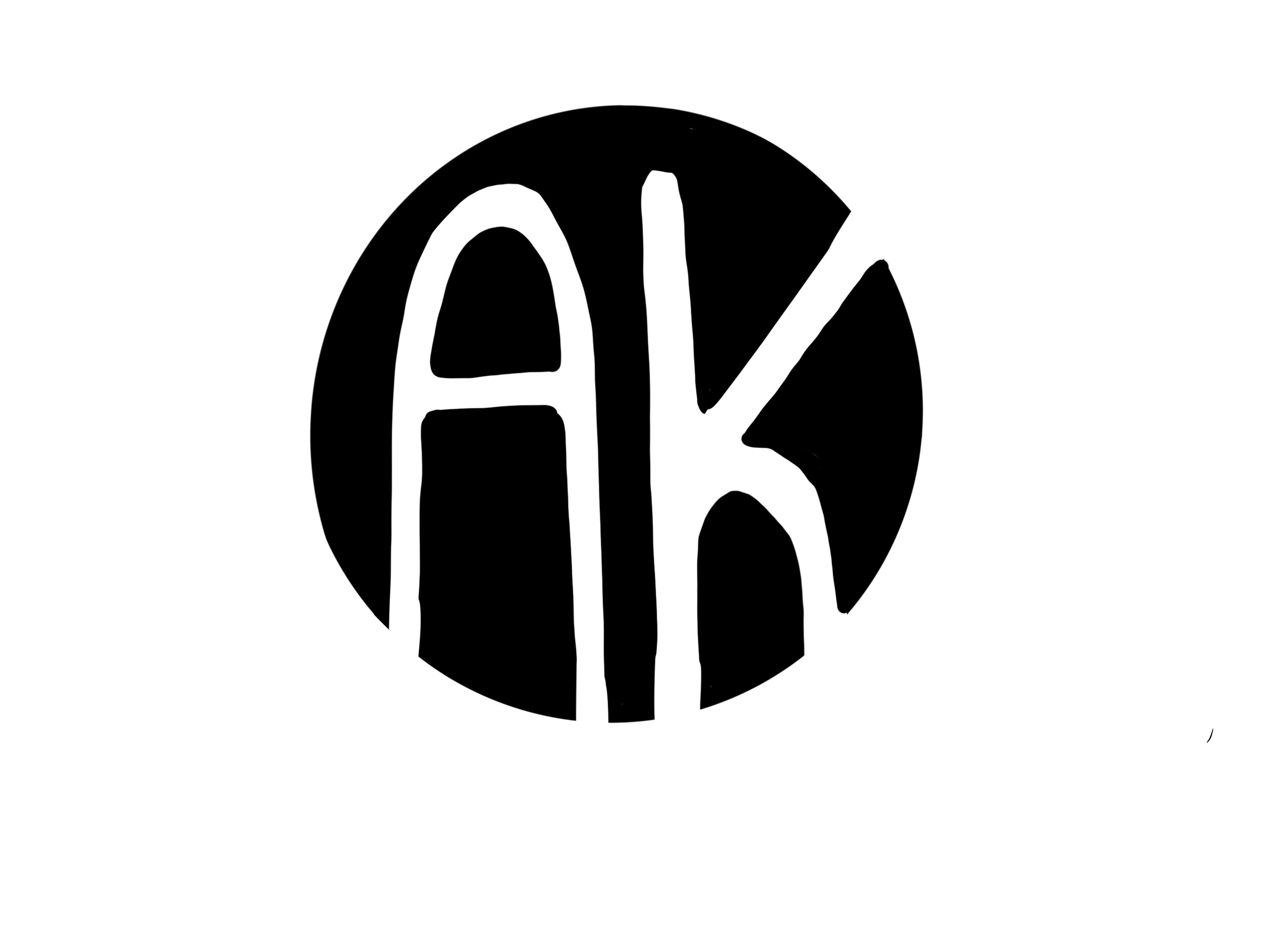Extract of text from a participant during the workshop
I have been running workshops across London that encourage participants, aged 12 to 16 to visualise their dyslexia as a hybrid animal. The workshops were an enriching experience that opened up a safe space for students to discuss what it is like to be dyslexic in school today. It helped them articulate their experiences through visual and engaging means. My project aims to empower dyslexic students who are neglected by the school system. This was inspired by my own experience of education as someone with dyslexia. I have run variations of the “Dyslexia as a Hybrid Animal” workshop at four Secondary Schools, The Great Exhibition Road Festival, and the RCA 2022 Degree Show.
I began by reaching out to Schools in South West London in September 2021 to see if they would be interested in working with me. Due to the pressure schools have been under over Covid, this proved incredibly difficult at the beginning. It wasn’t until Spring 2022 I got responses from Schools.
I worked closely with the special educational needs (SEN) members of staff at each of the schools to select the students for the workshop. The workshops began with a short presentation on different types of learning methods, for instance, what it means to be a visual learner, auditory learner, and kinaesthetic learner. I would then ask the participants to define dyslexia in the form of a mind map. We then would go on to play a quick warm-up exercise of consequences followed by the main activity of drawing their dyslexia as a hybrid animal. The initial discussion on what type of learner they are helped participants to define the physical characteristics of their animal in a visual way. For instance, if a participant described themselves as auditory learner ( someone who learns through listening) they might draw elephant ears on their animal. One of the aims of this workshop is to help the participants reflect on their preferred learning methods and hopefully tailor their revision and learning strategies to fit this type of learning in the future. This was about giving autonomy to the student and power over their education.
Another aim of the workshops was to get groups of dyslexic students in the same room to share their experiences of having dyslexia. As someone who was frequently removed from lessons in school because I was dyslexic, I rarely got to know other students who had the same experience of education as me. So often dyslexic students get segregated and put into one on one lessons ( for their own benefit) but this leads them to feel isolated and different. By getting them all together during the workshop they got to talk and laugh at similar struggles they encounter at school, as well as what they like about their unique hybrid dyslexia animal.
Personally, I find each and every one of these outcomes endlessly interesting. It was a pleasure to speak with students and hear their experiences of being dyslexic. I think it is also very interesting to point out the recurrence of animal characteristics, considering none of the participants had seen the outcomes from previous workshops. For instance, the use of multiple legs and feelers, described by the participants as their dyslexia's ability to pick up and overload on information. I also love the uniquness of each of the outcomes. Unfortunately, I can't show all the outcomes just yet, as many are still being used to inform the final publication.
I sat in on one on one lessons with certain participants to record their body language through drawing. I chose drawing over photography because it is a far less invasive way of capturing body language. This helped me understand the participants' relationship with education better. I liked to use different colour pencils to document the fidgety, and self-soothing movements of the students when they were struggling with a task. I believe this in addition to the drawings made by the participants in the workshops builds up a unique and honest image of what it's like for young people to have Dyslexia today.
I was invited to run my “Dyslexia as a Hybrid Animal” workshop at The Great Exhibition Road Festival (GERF) at the Goethe Institute in June 2022. This was a great opportunity to meet wider members of the public and speak to the parents of children with dyslexia and autism. This made me reflect on how this project can evolve into something more than a project on dyslexia but could cover the spectrum of neurodiversity.
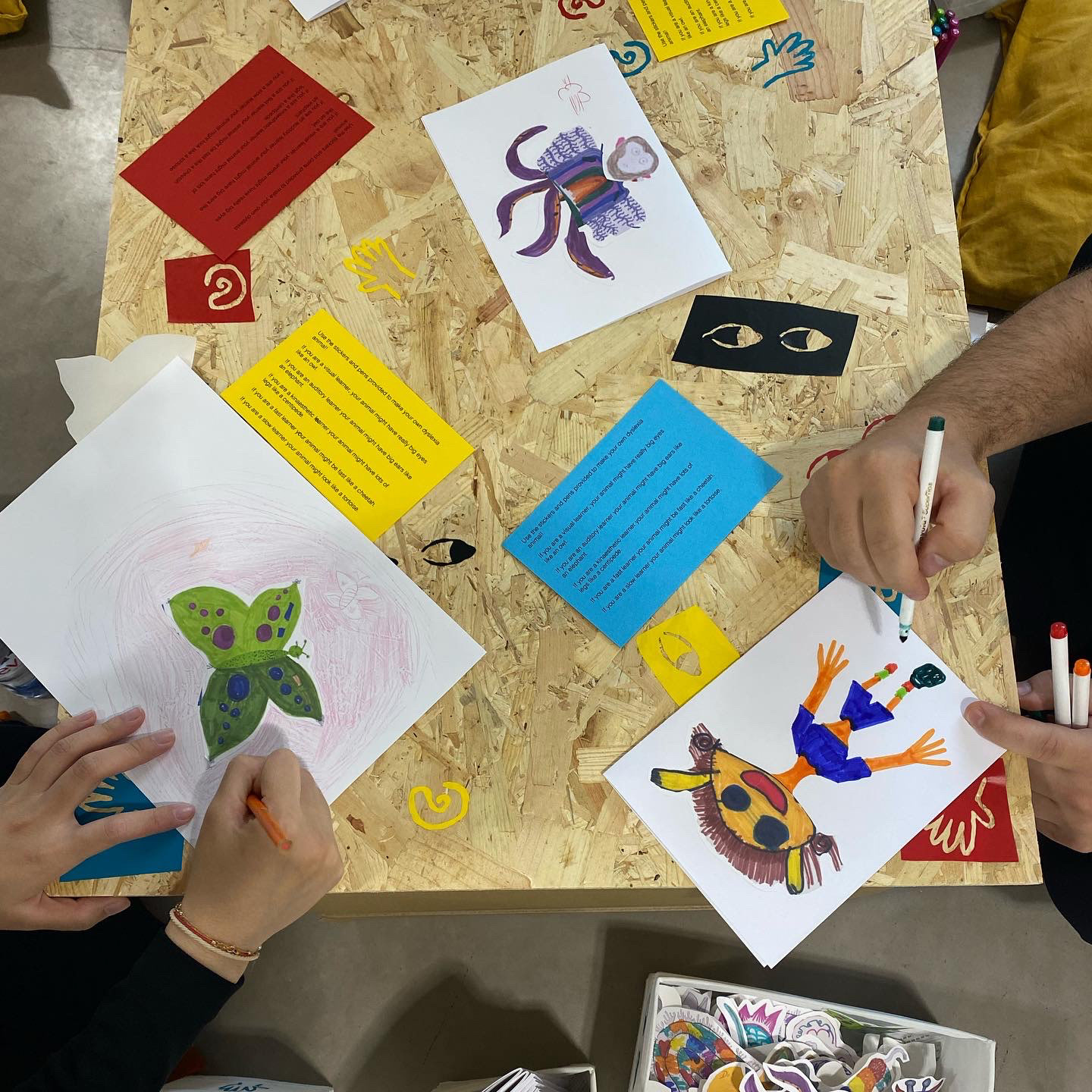
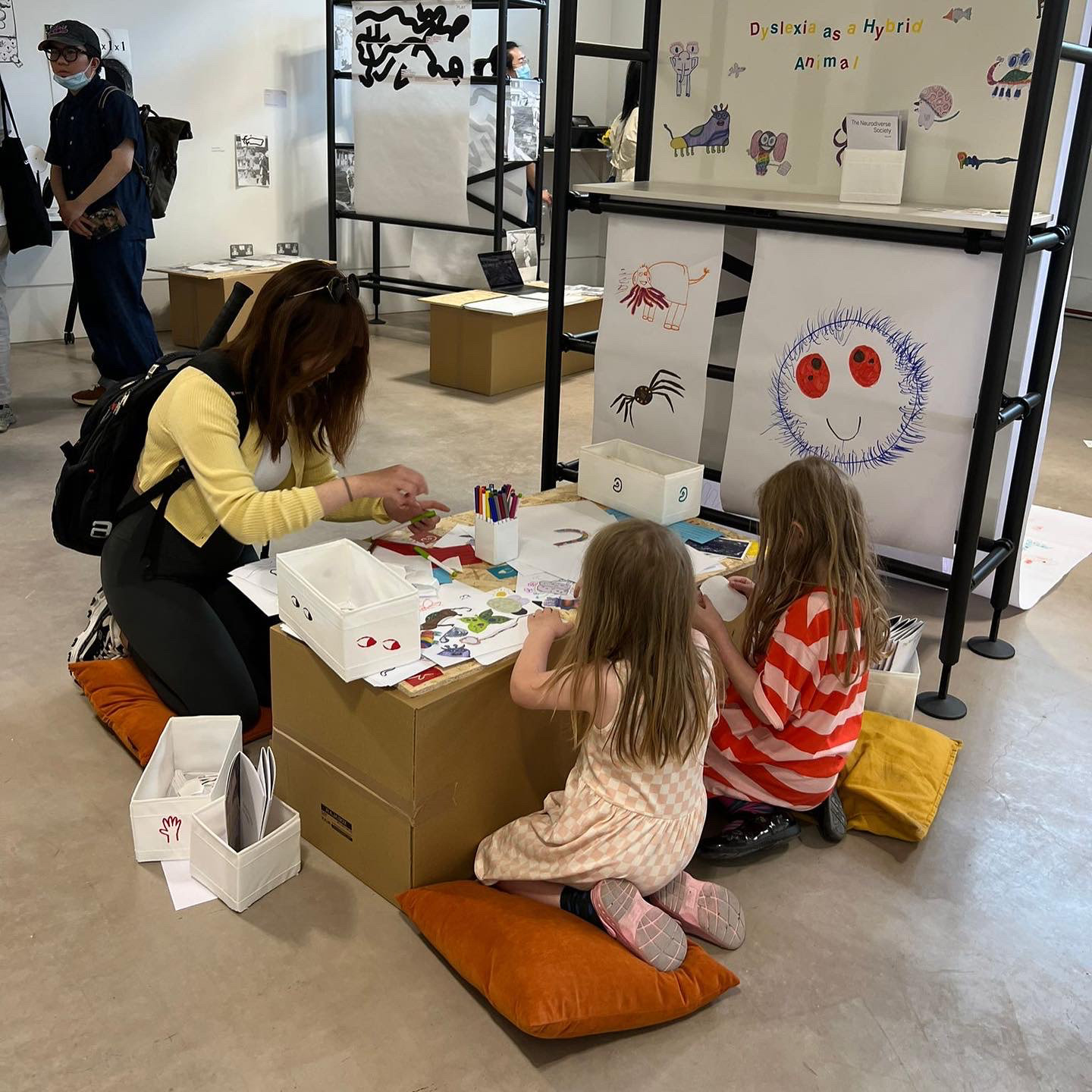
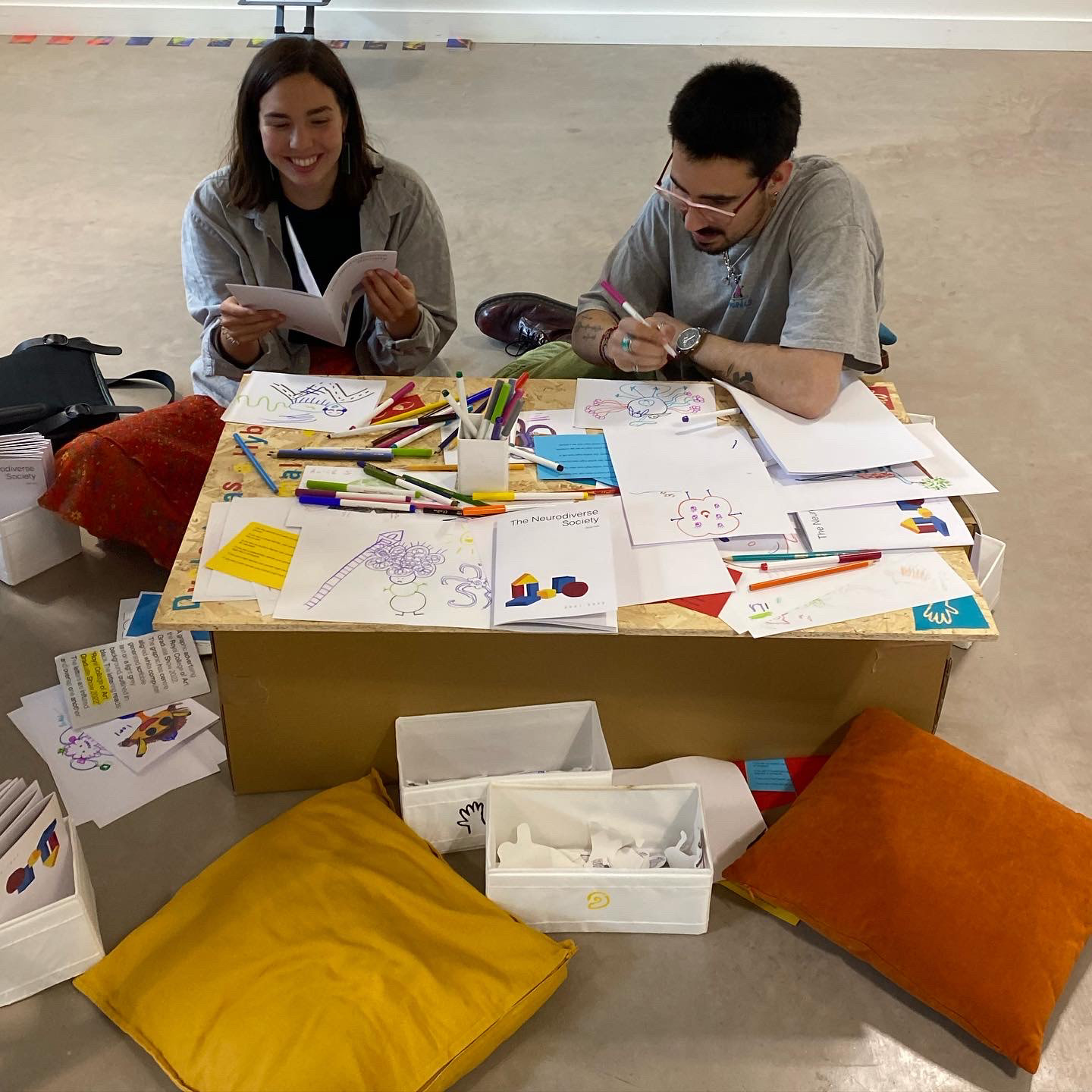
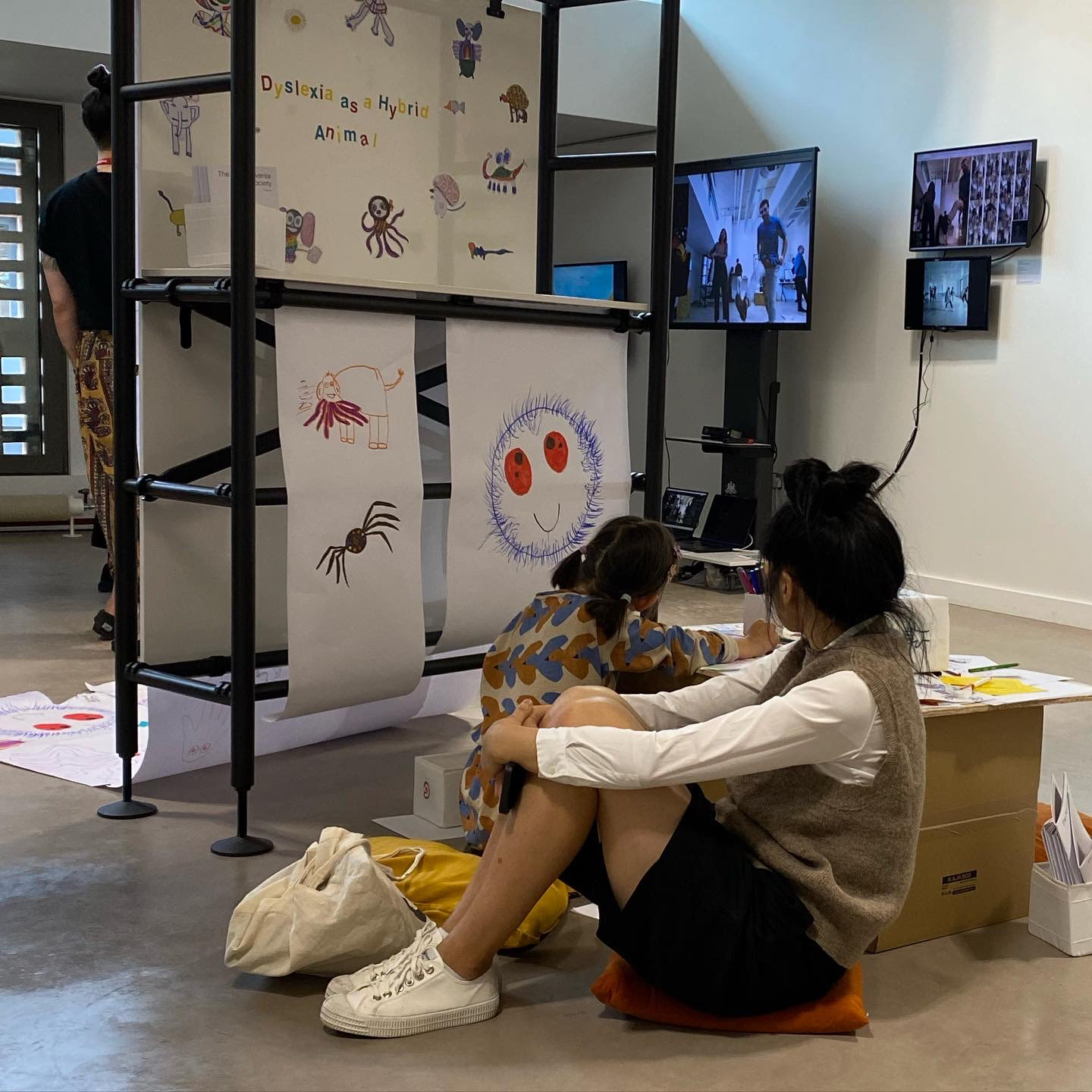
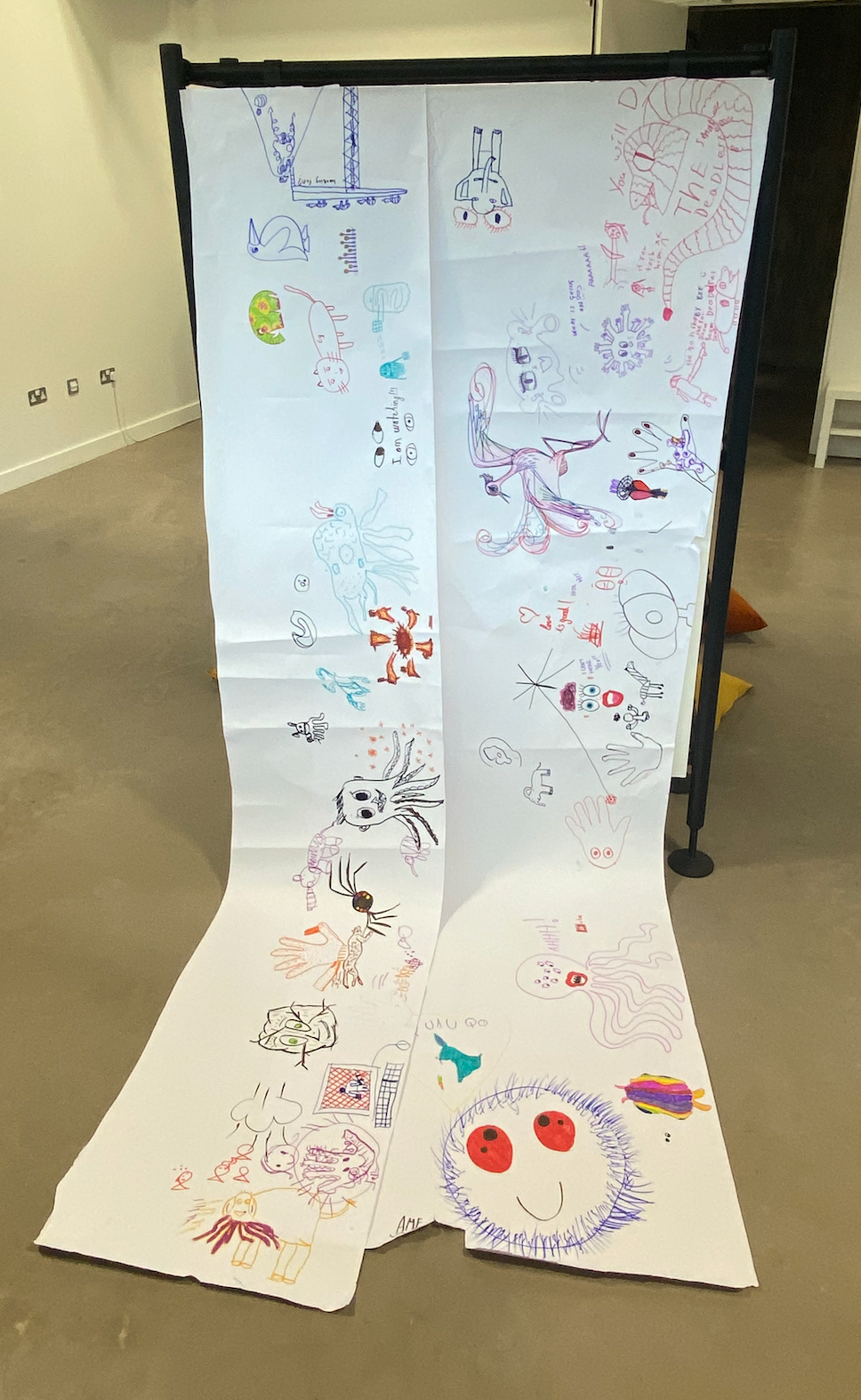
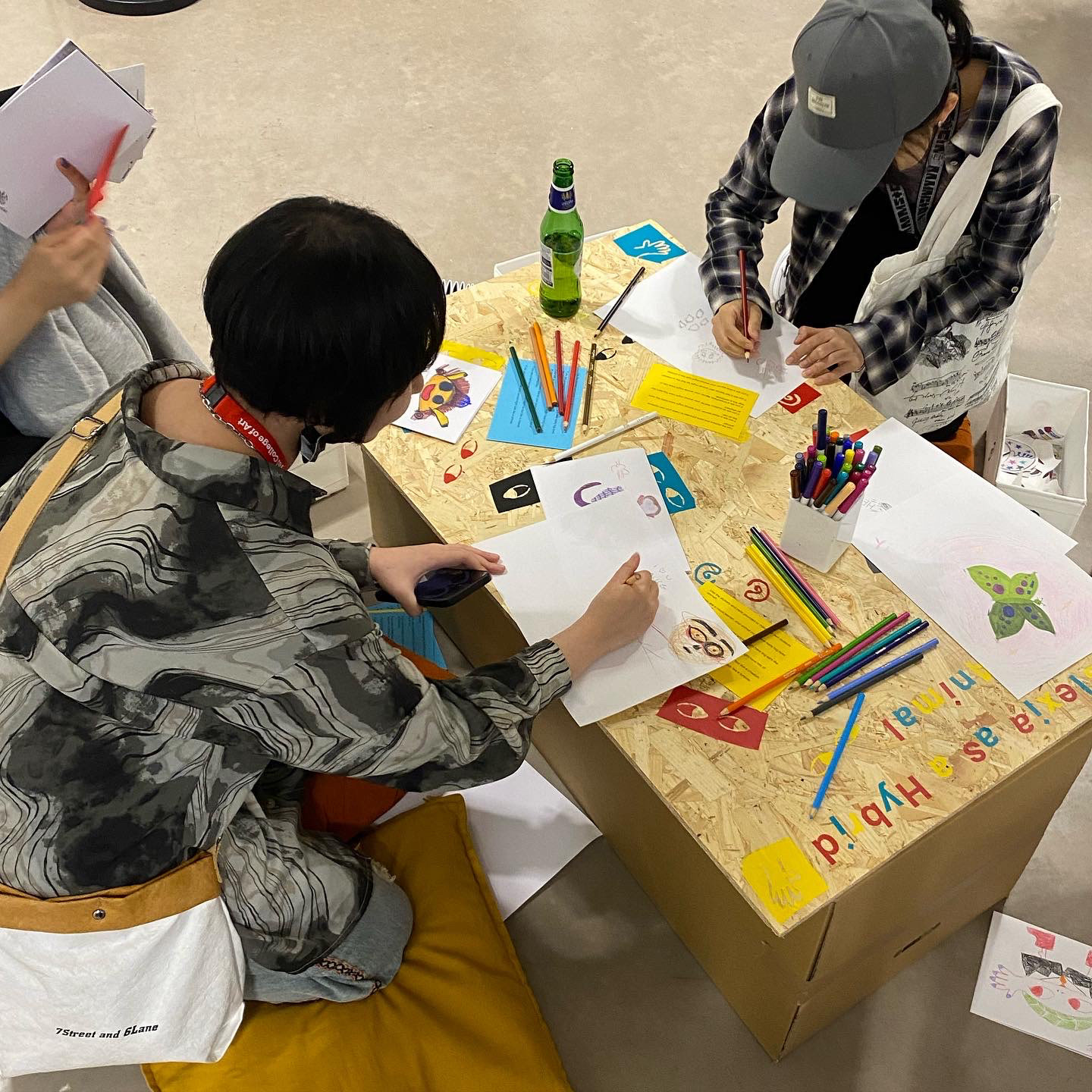
Following the success of the workshop at Schools and GERF, for the RCA 2022 degree show, I decided to set up a week-long drop-in version of the workshop for audiences to take part in. I adapted the workshop so that I didn't have to be there to facilitate it. I left brief instruction prompts and materials for people to use at their leisure. I also turned hybrid animals from previous workshops into stickers for people to use. This was the first time running the workshop in this way and I think it went very well. This approach has gone on to influence the direction of this project.
